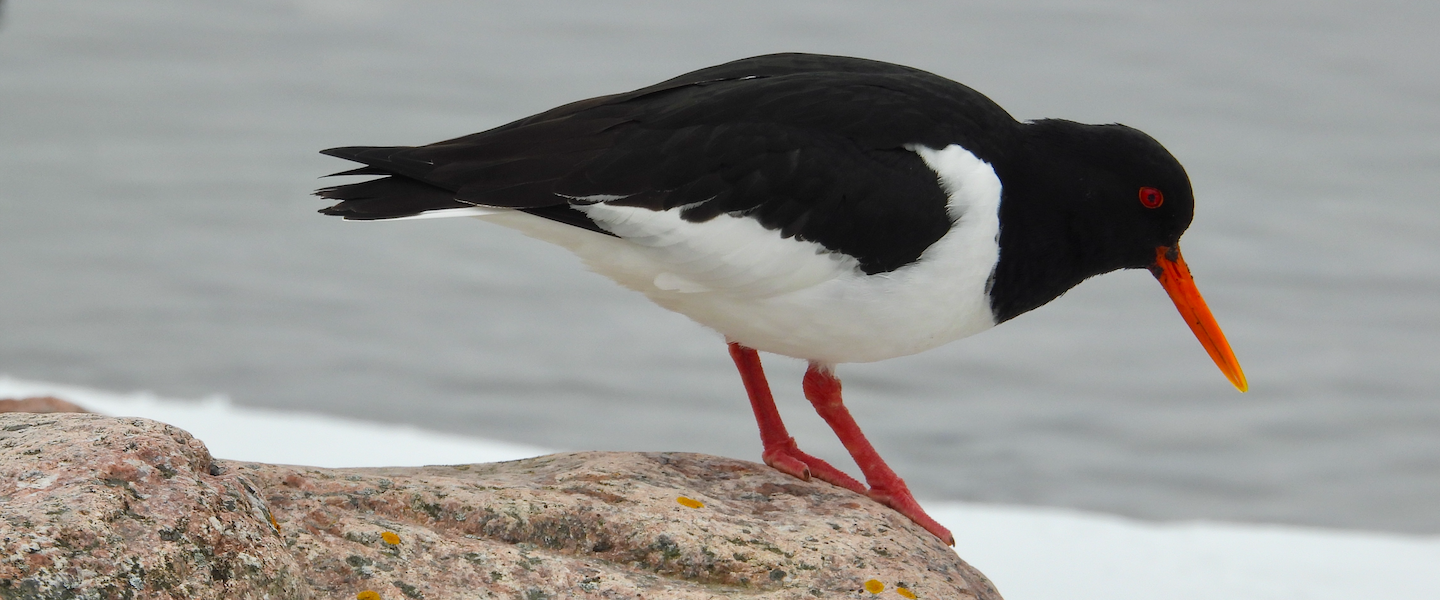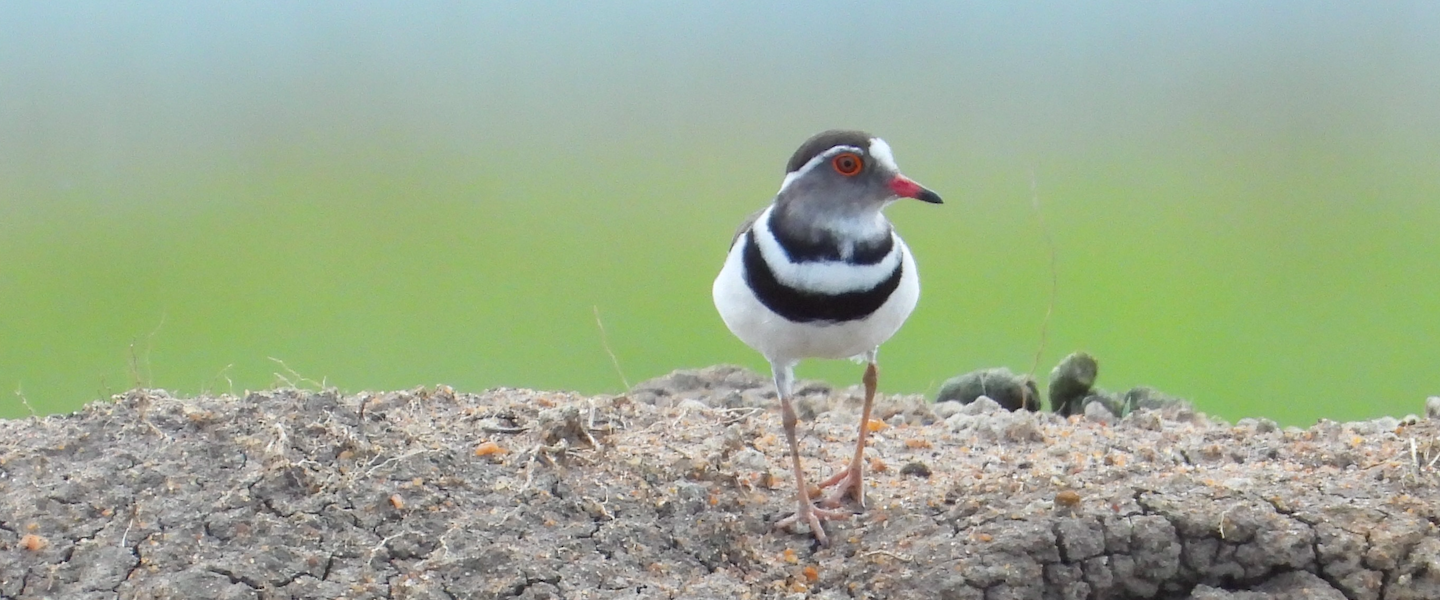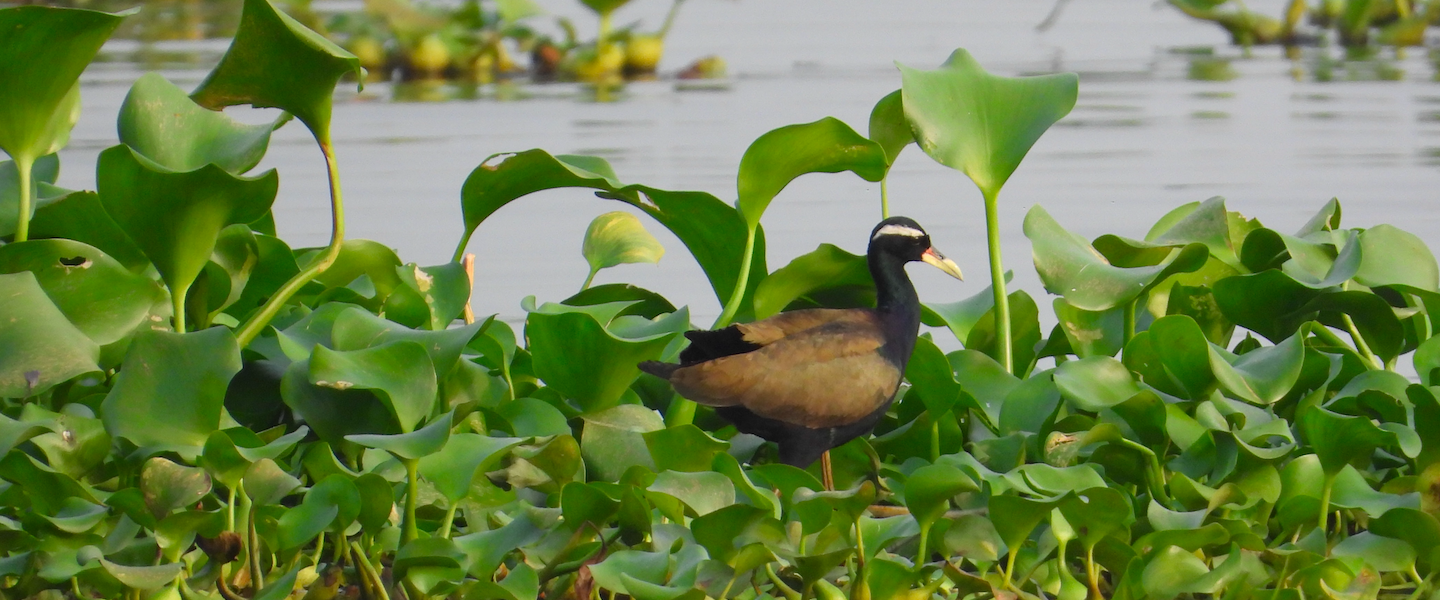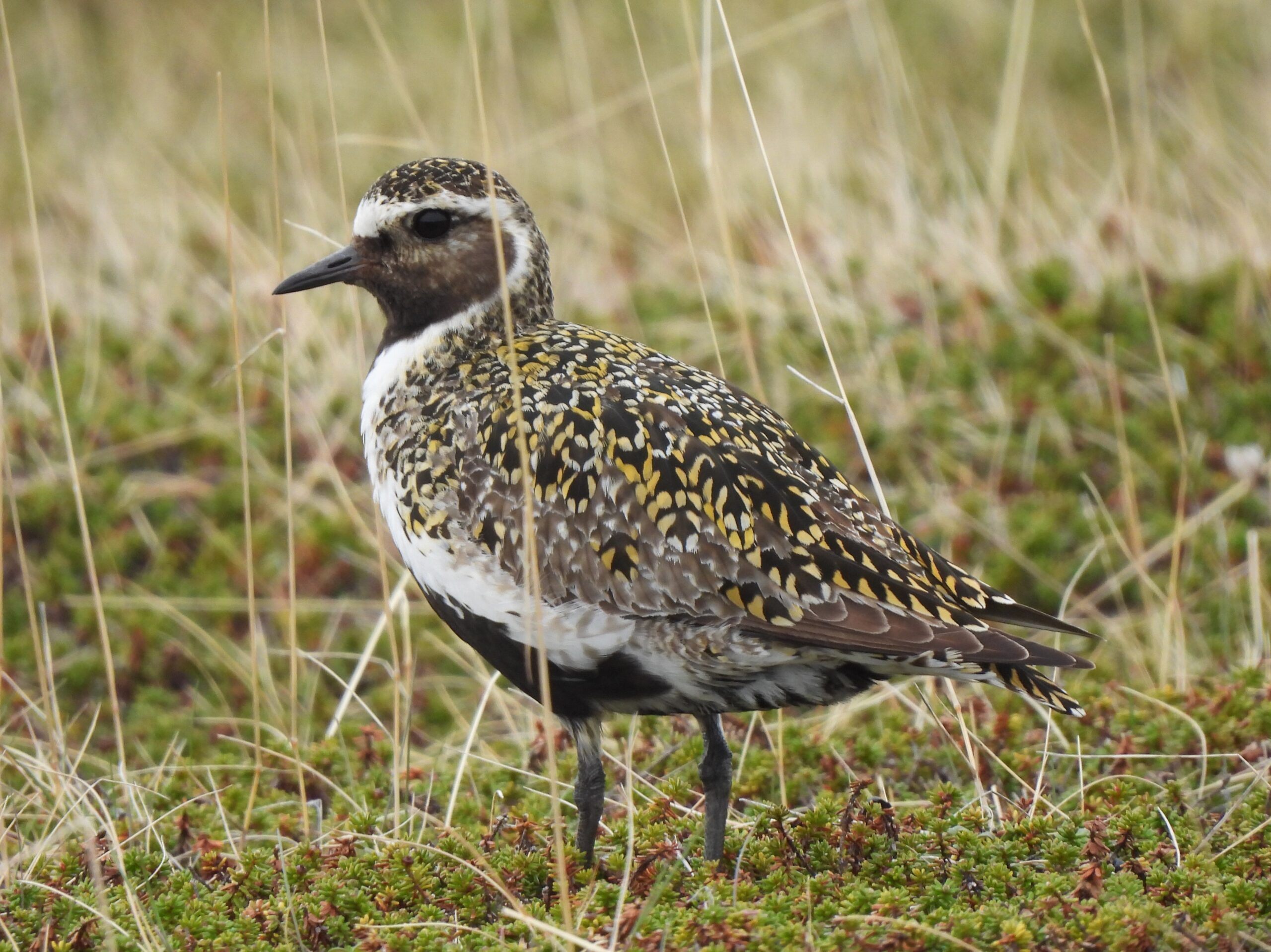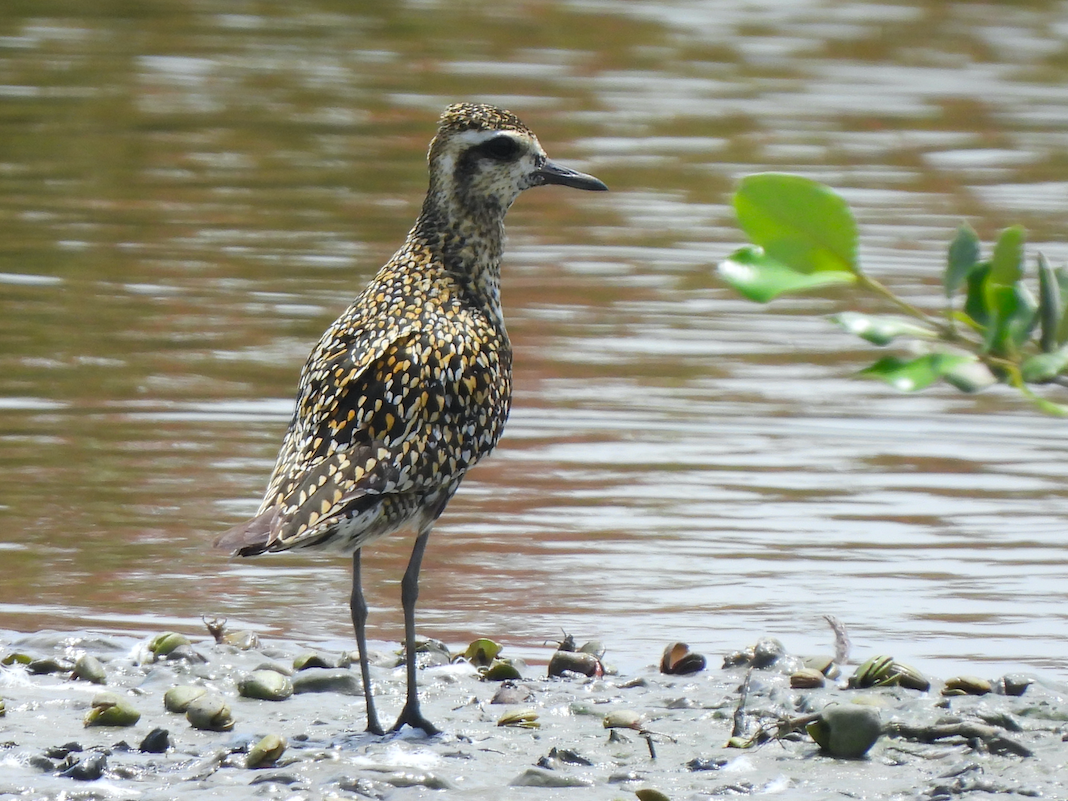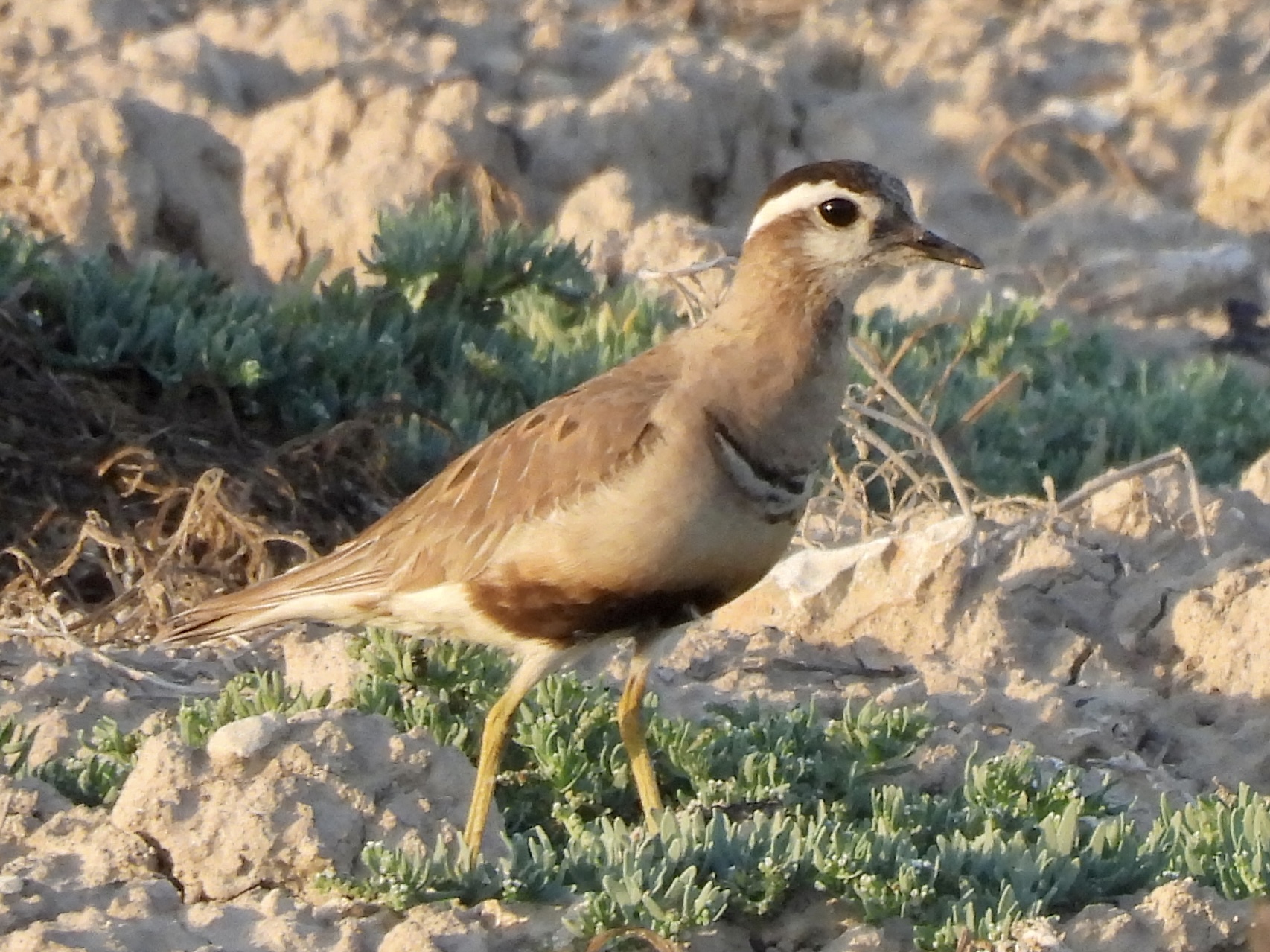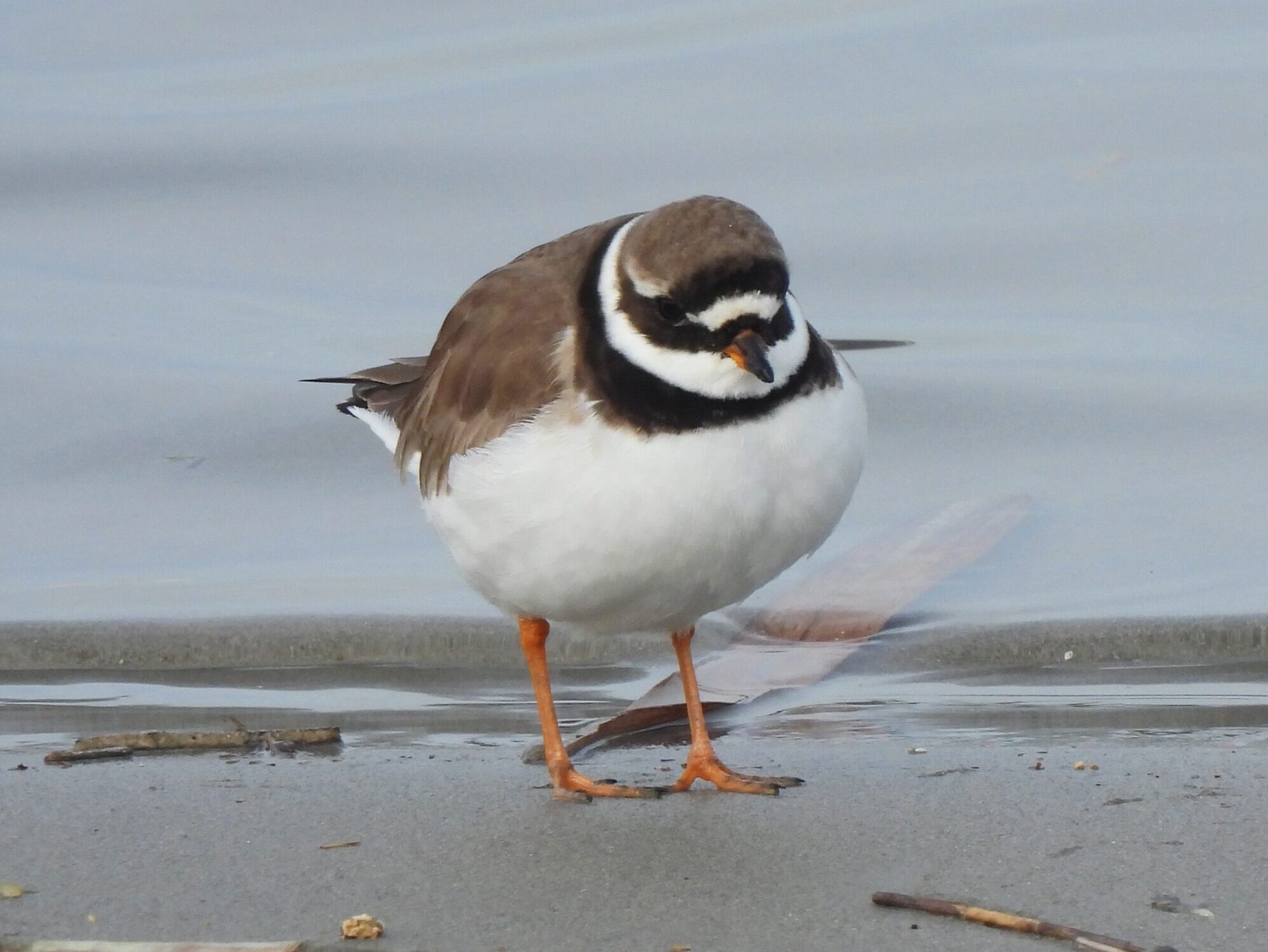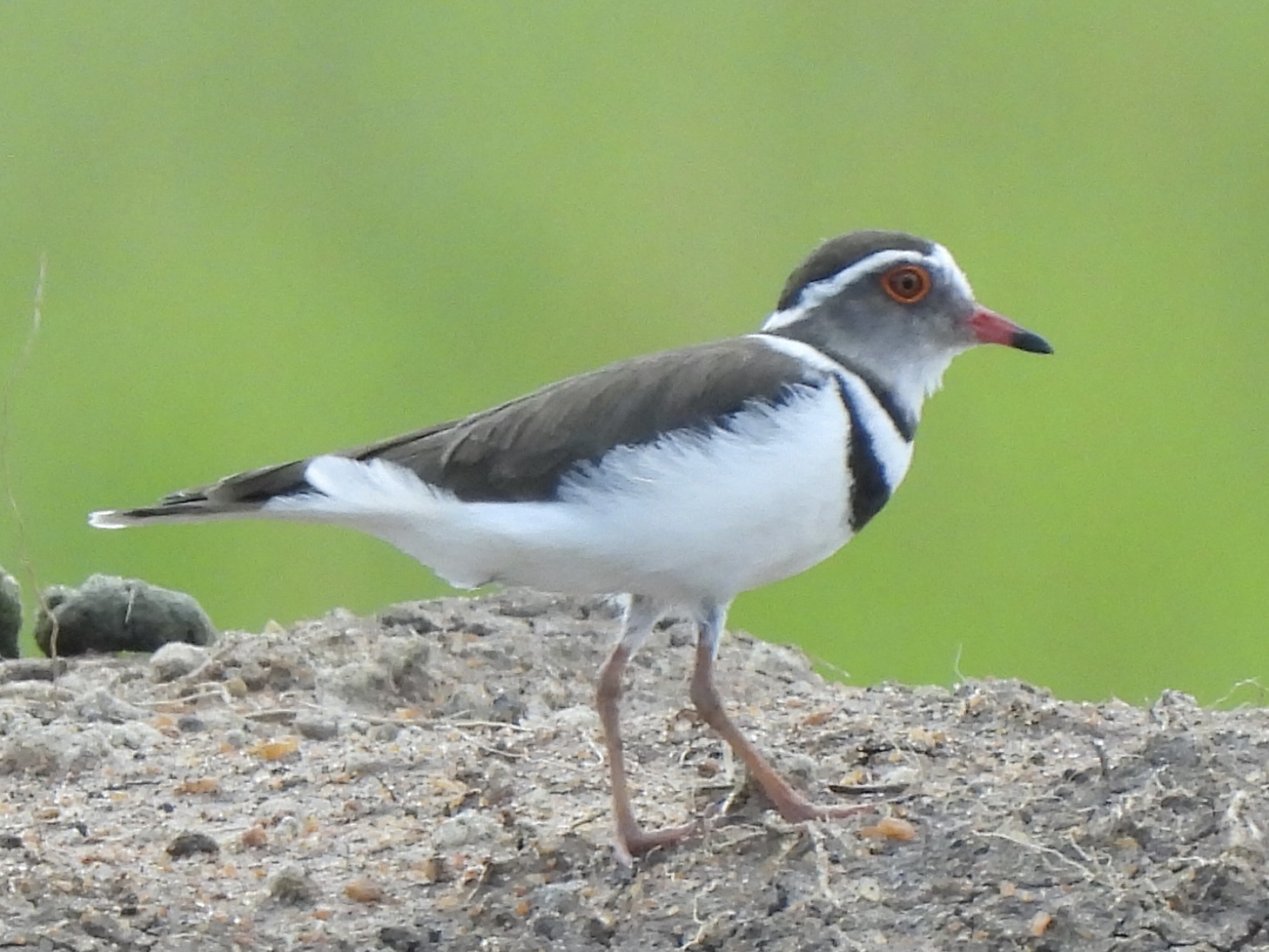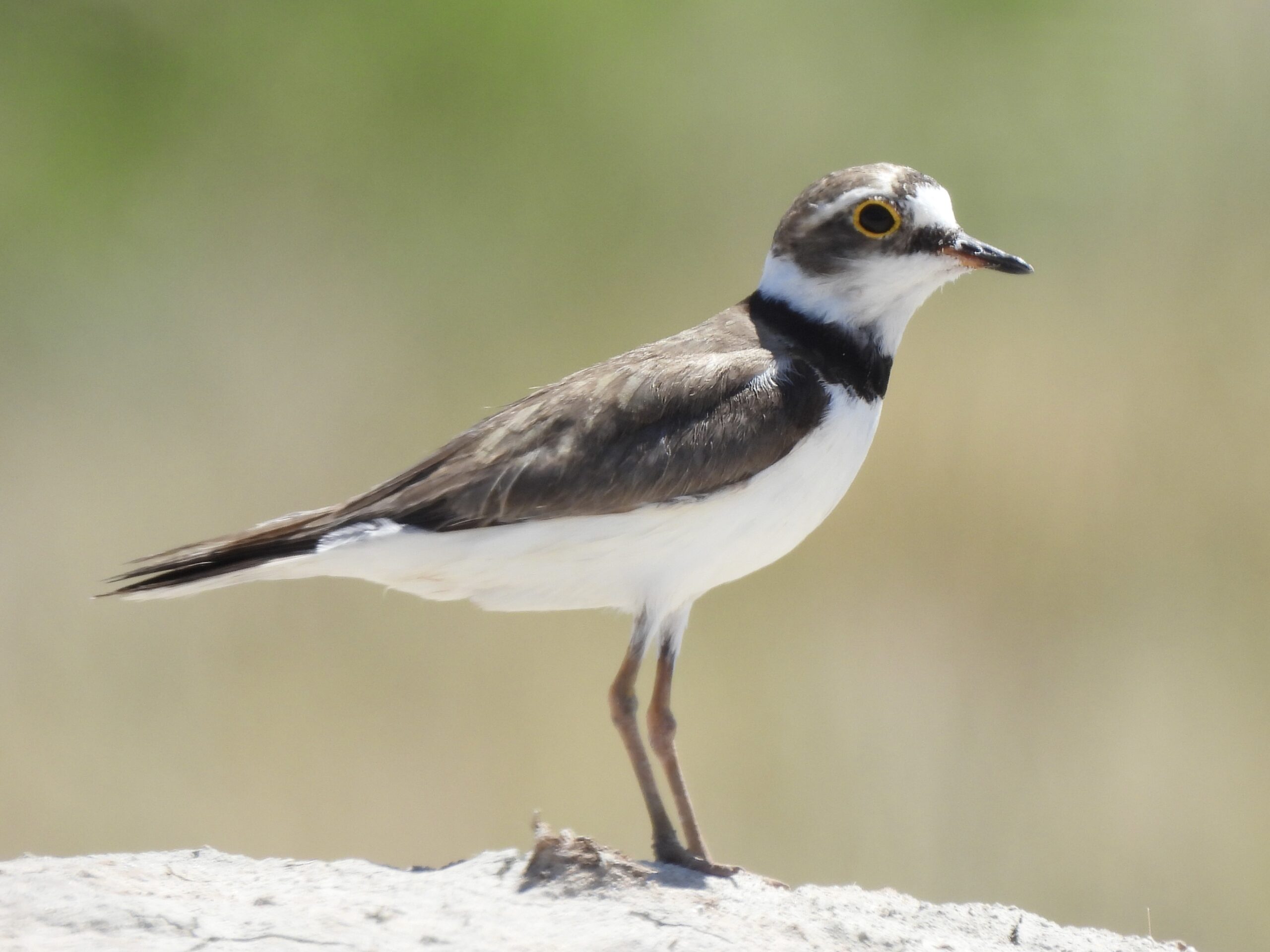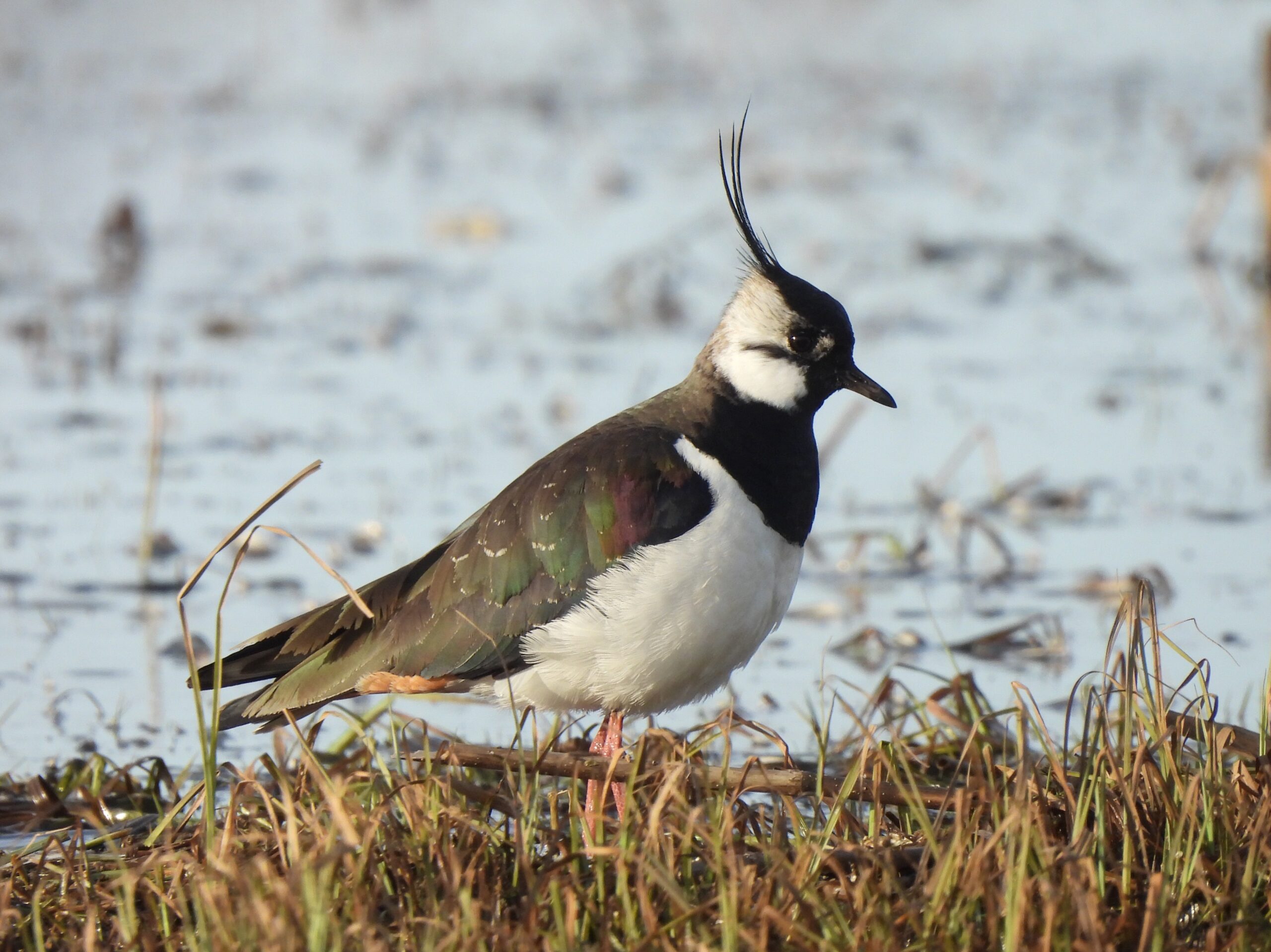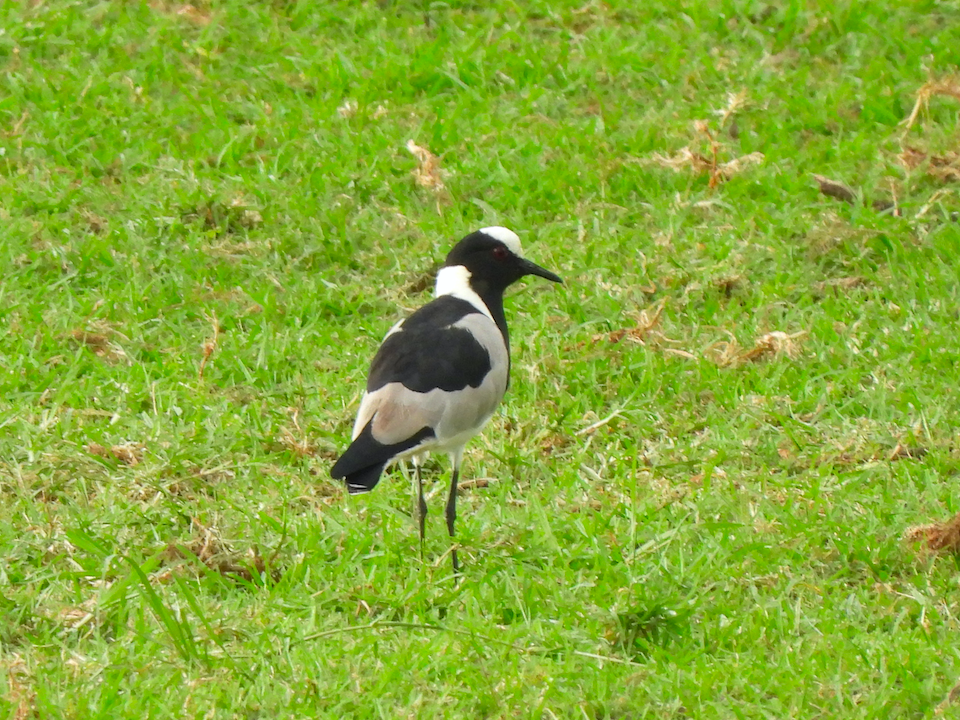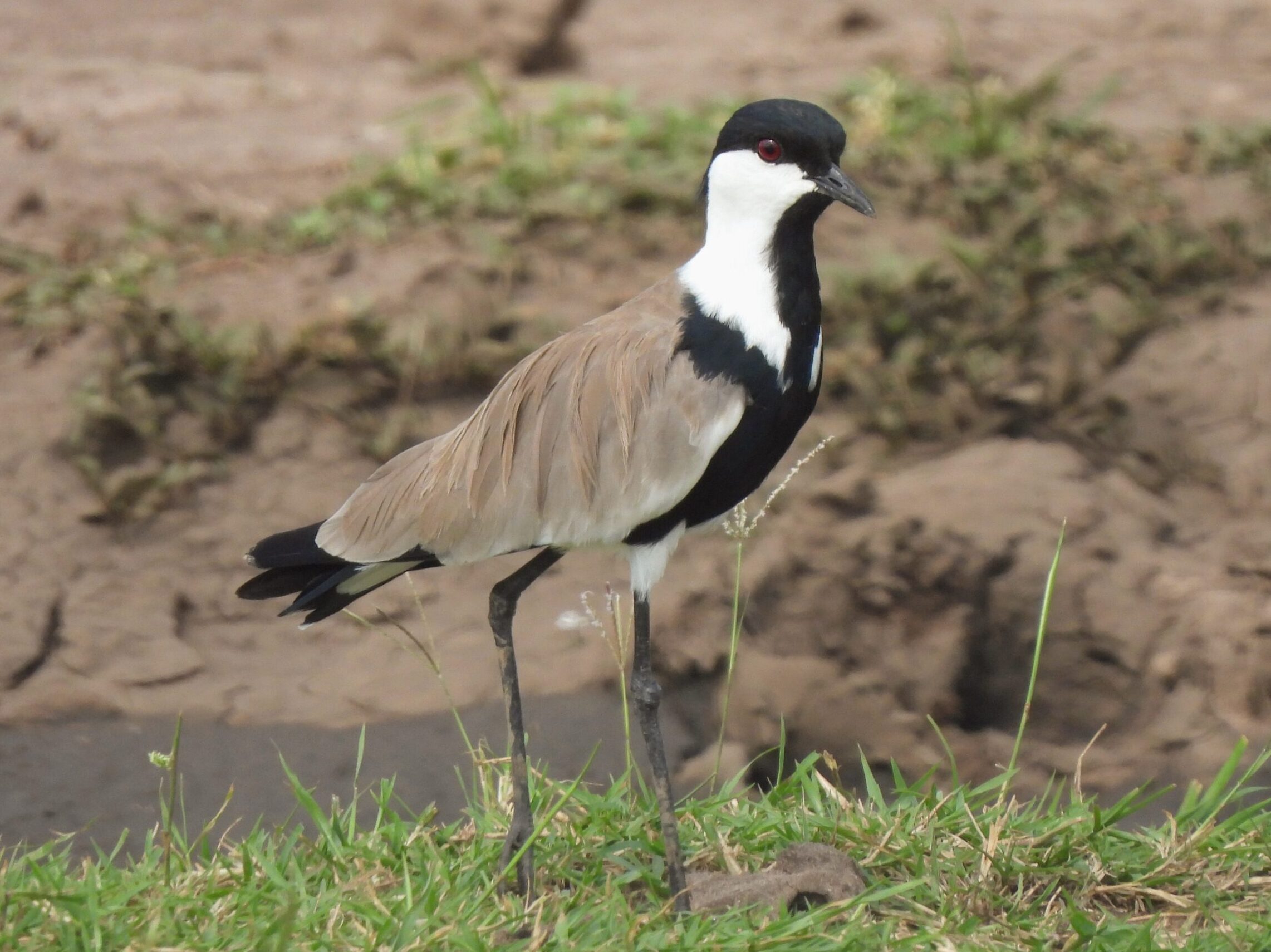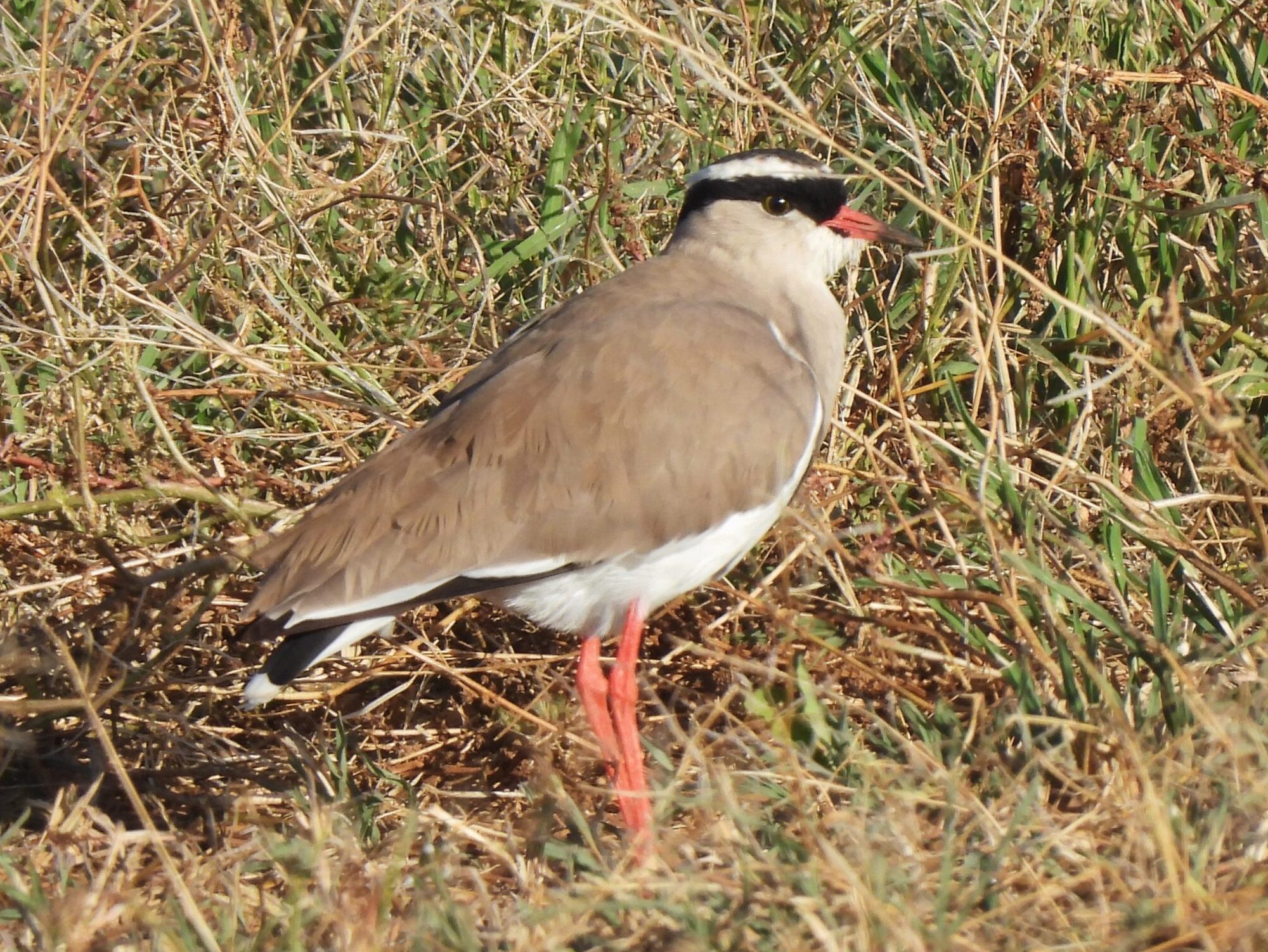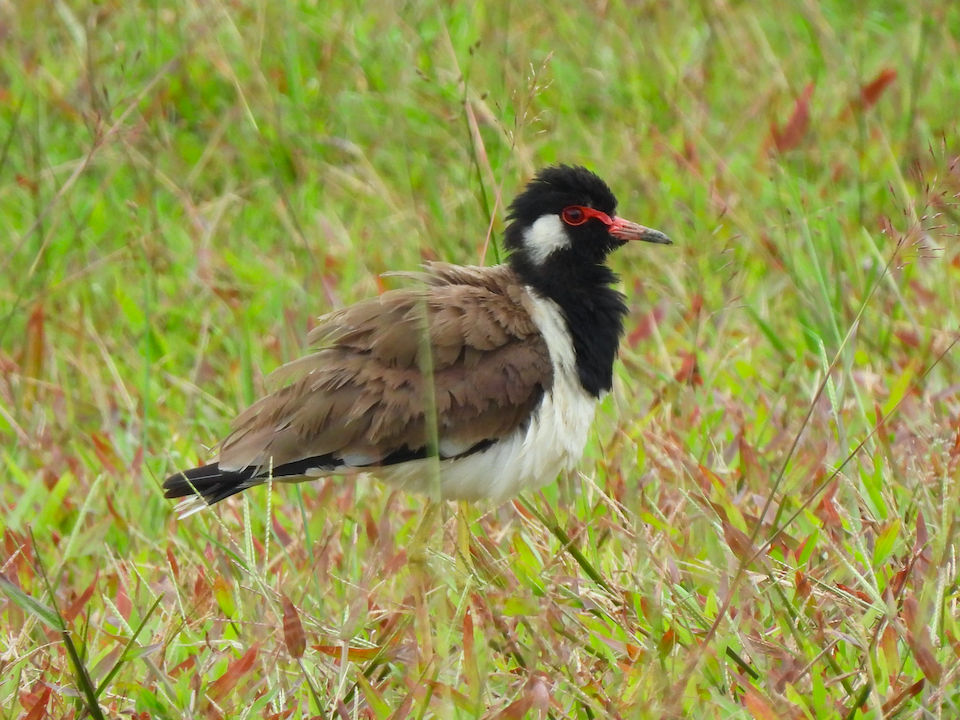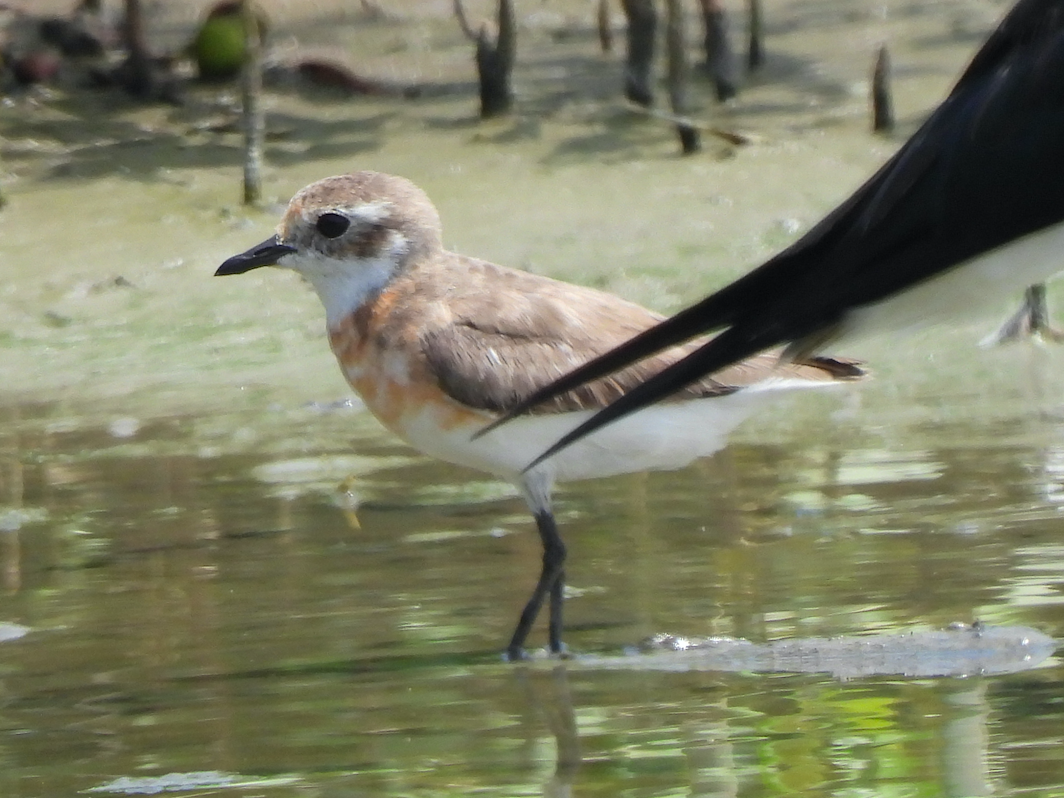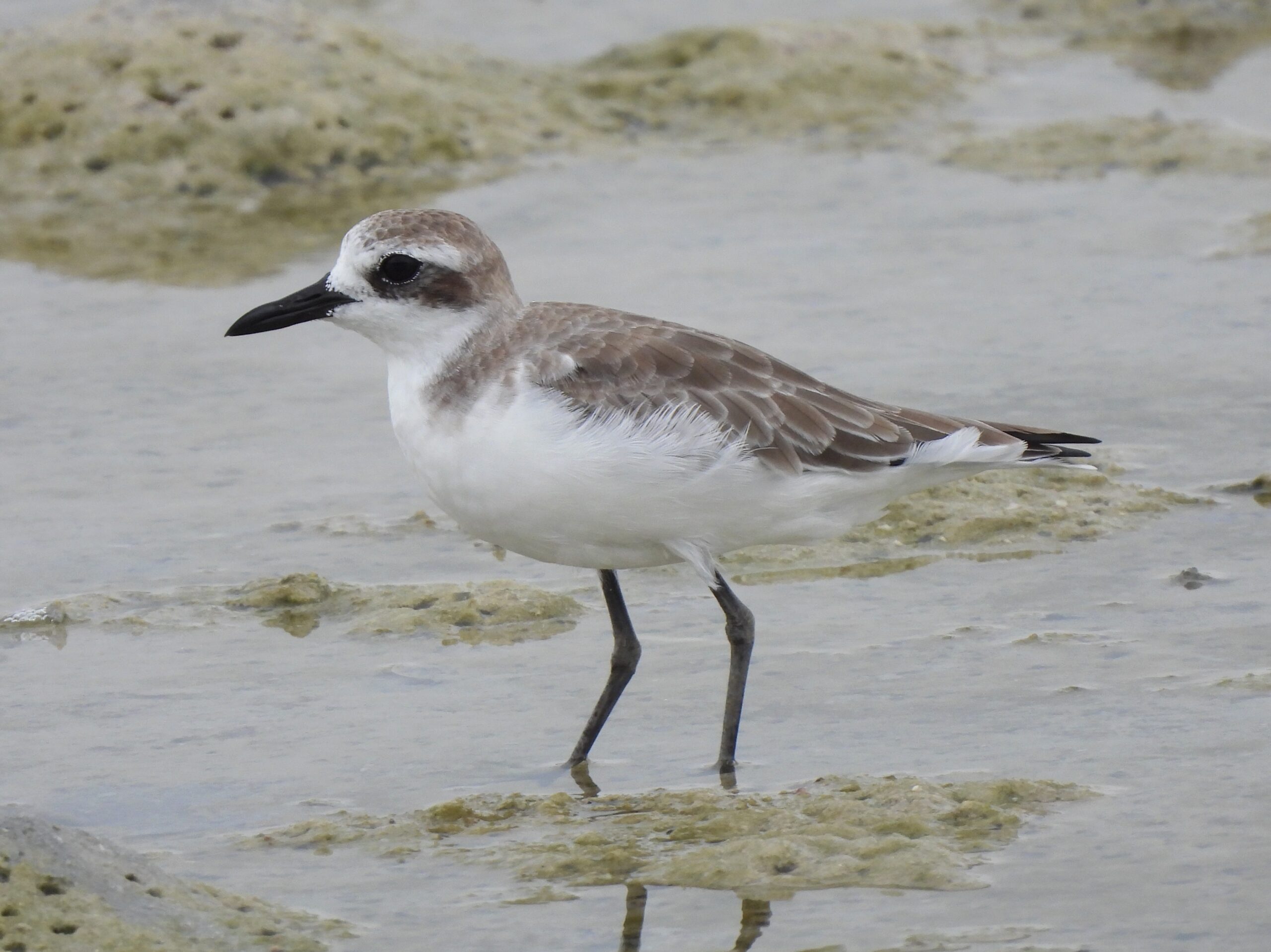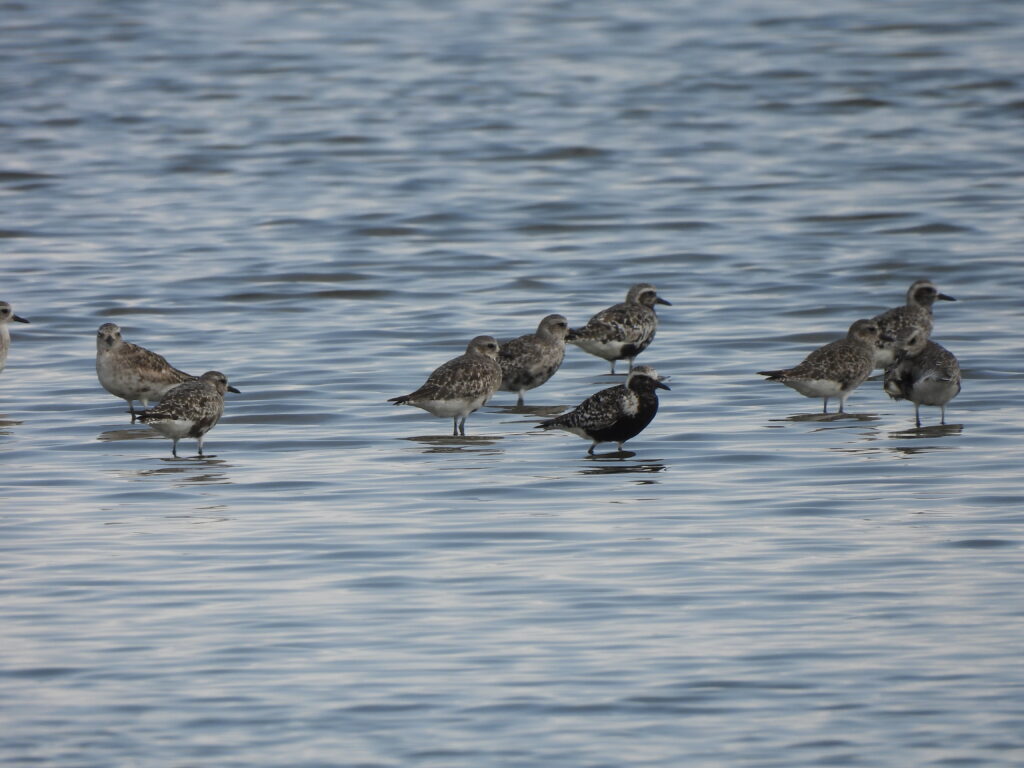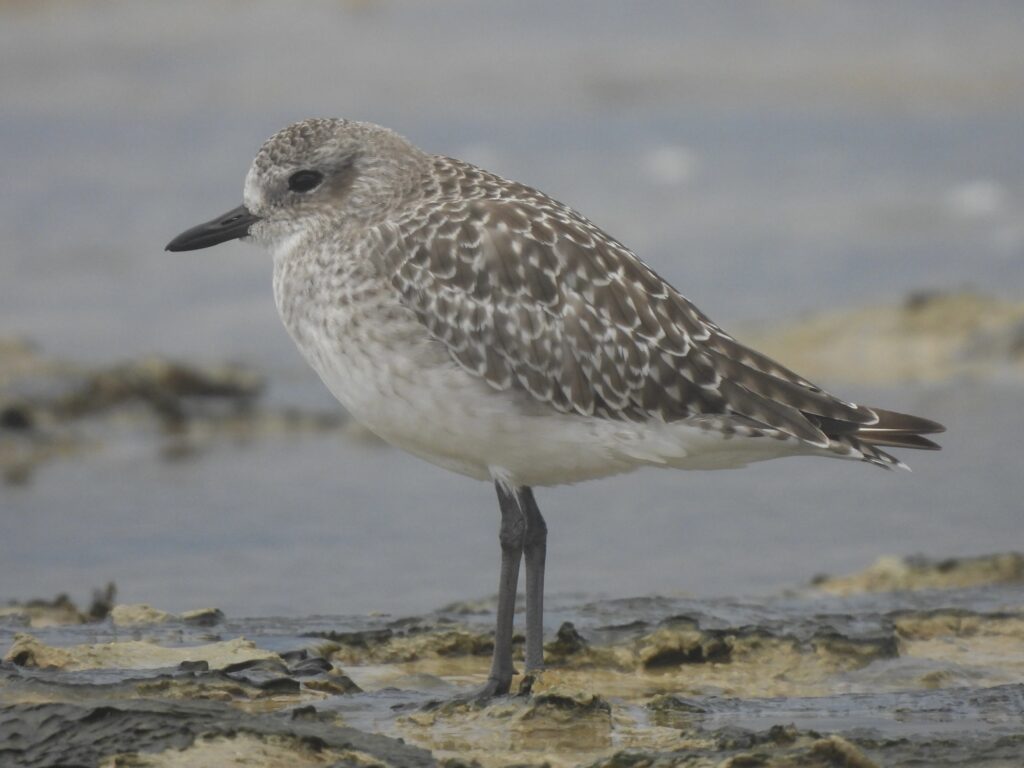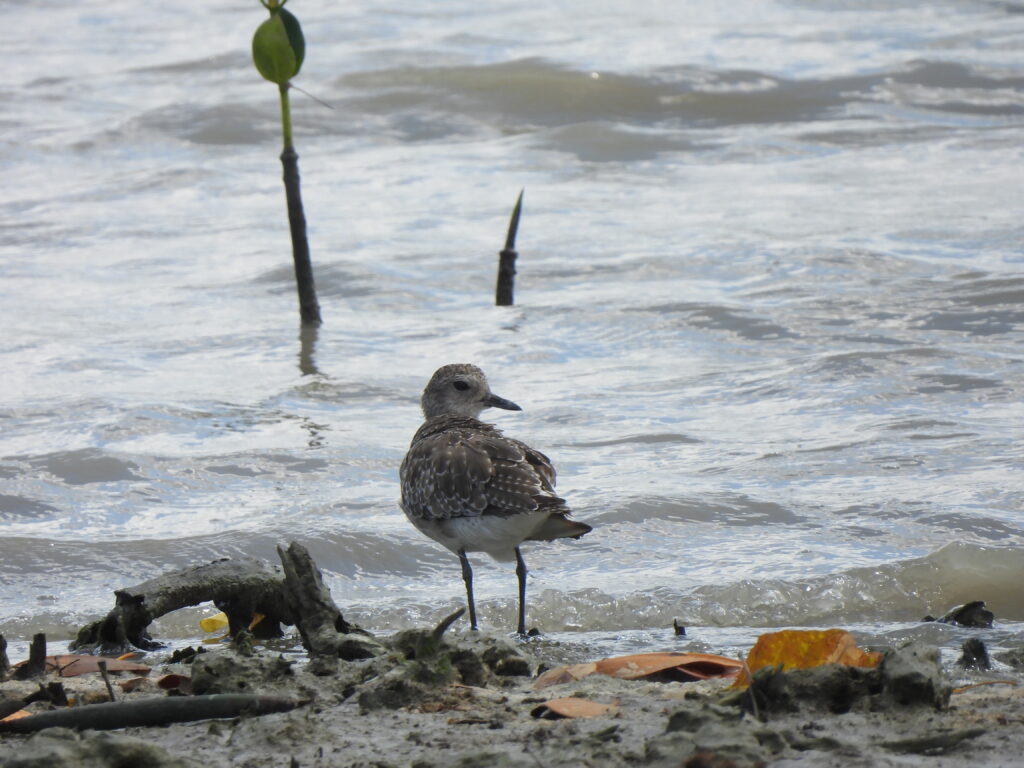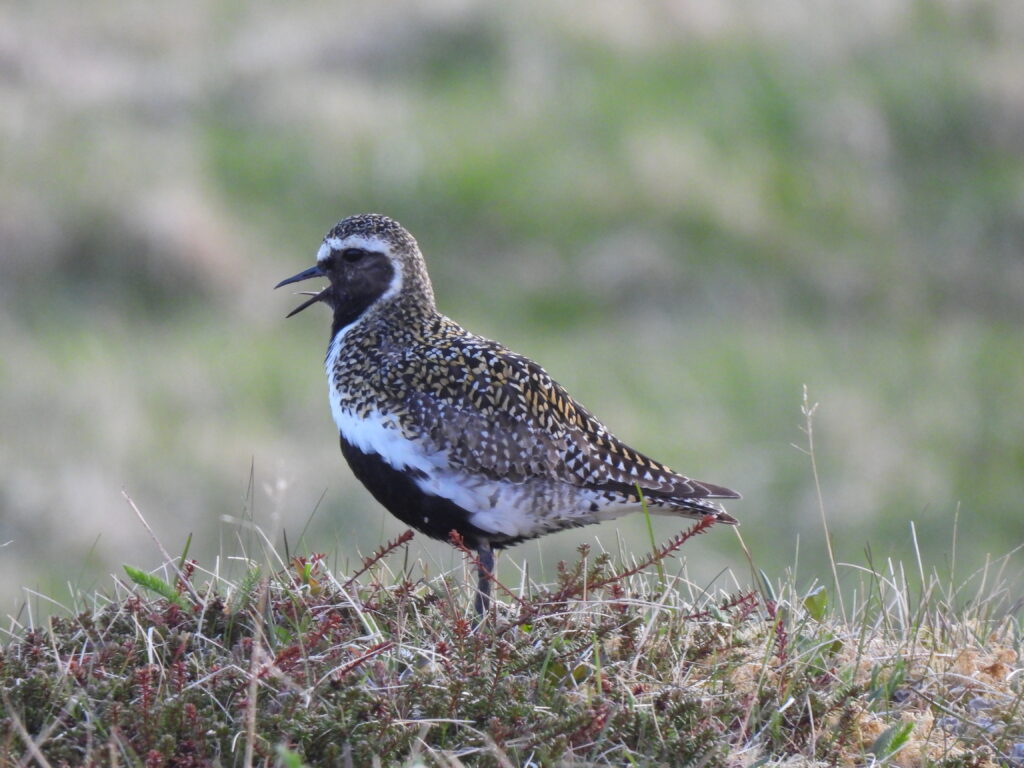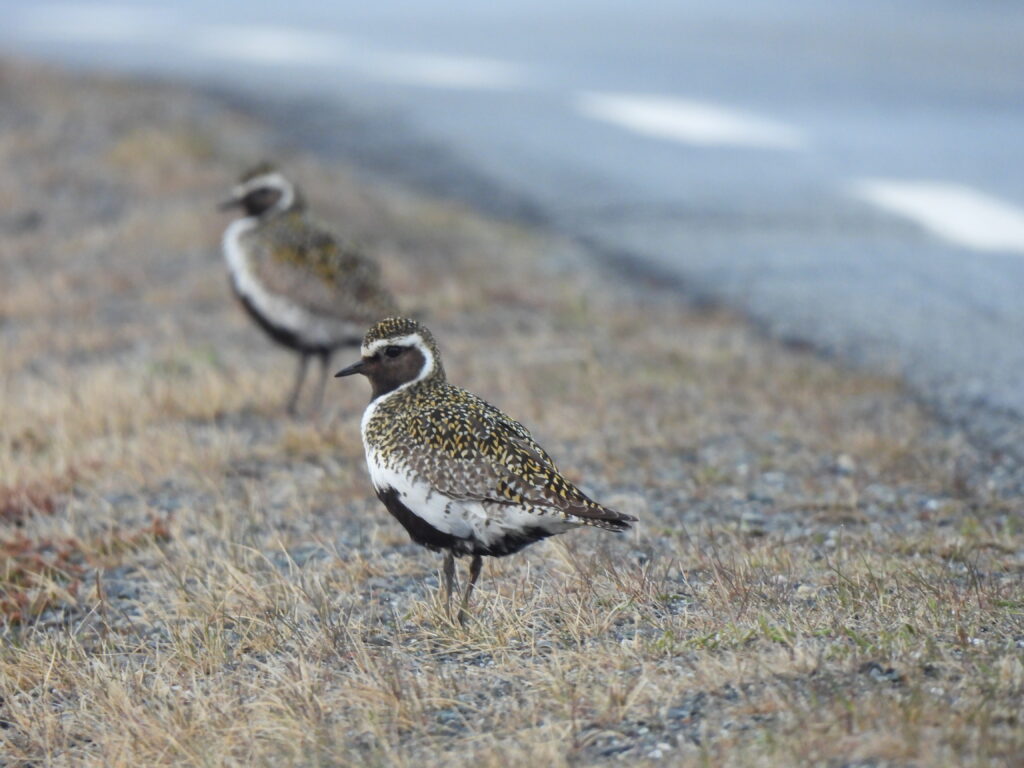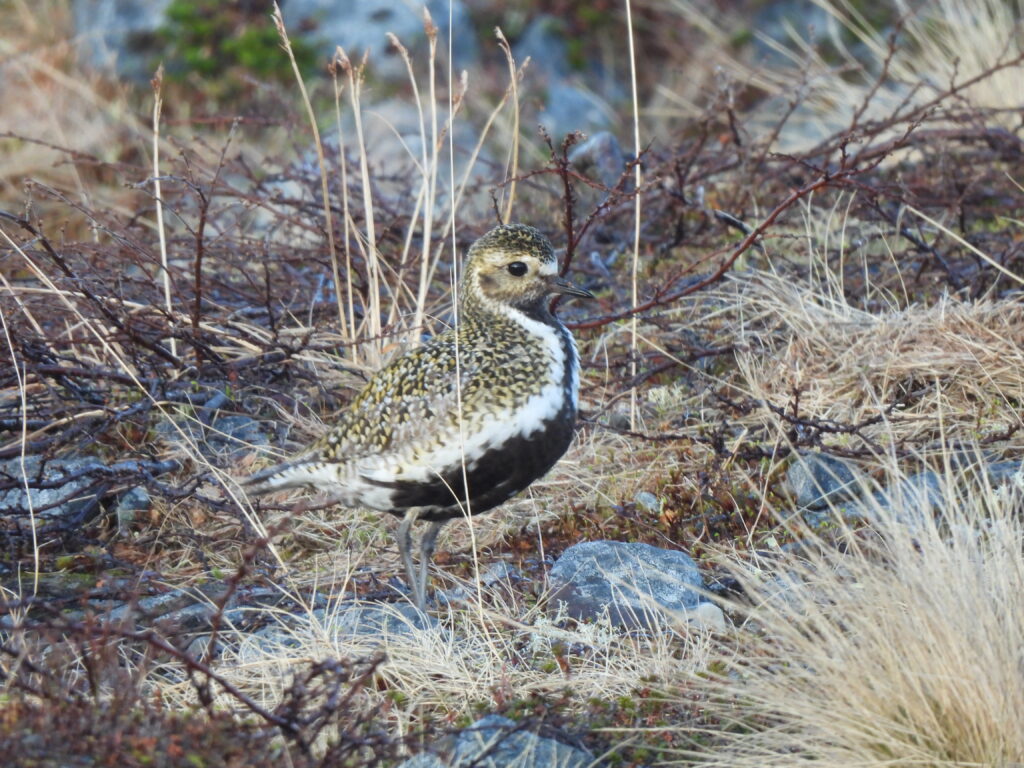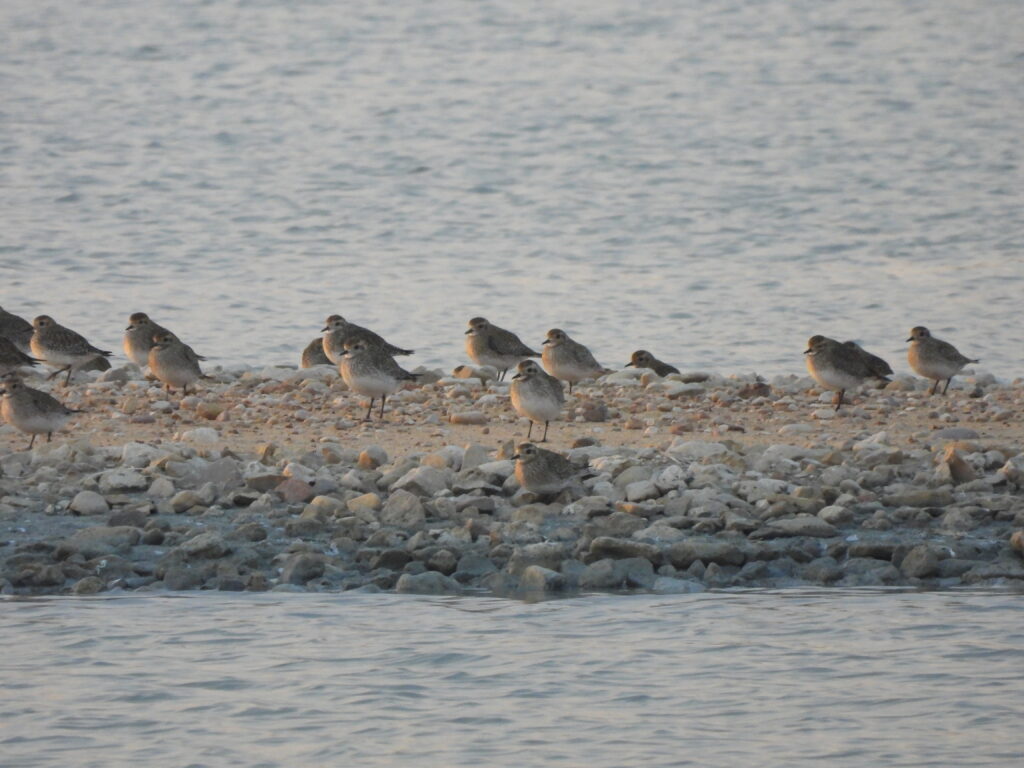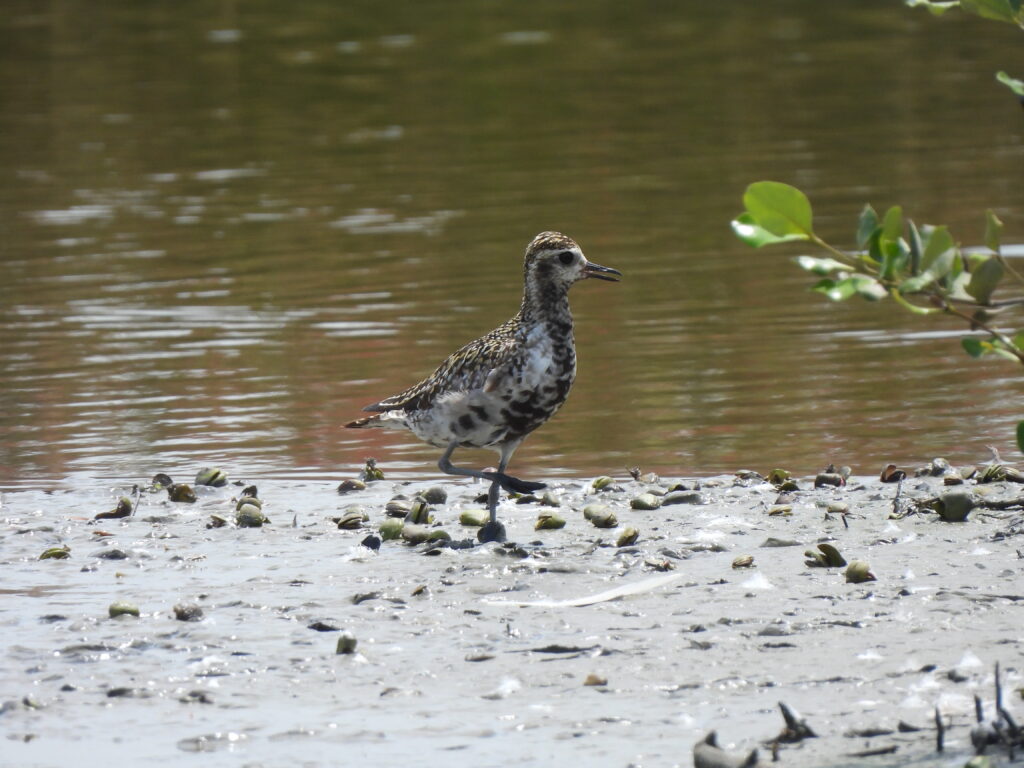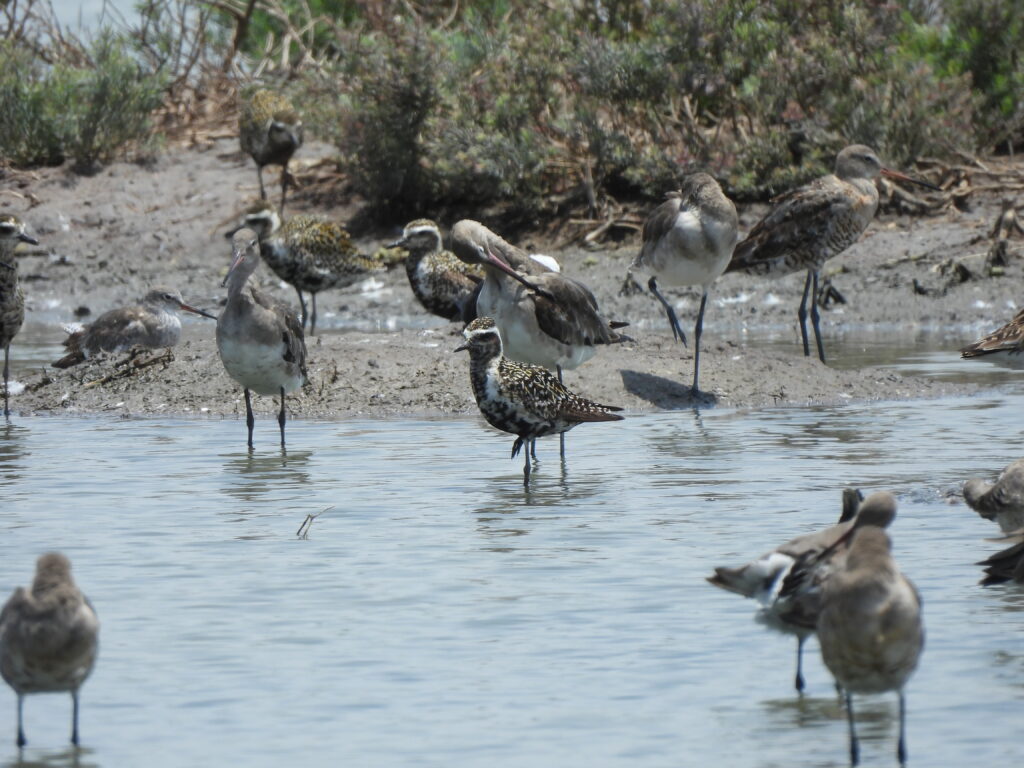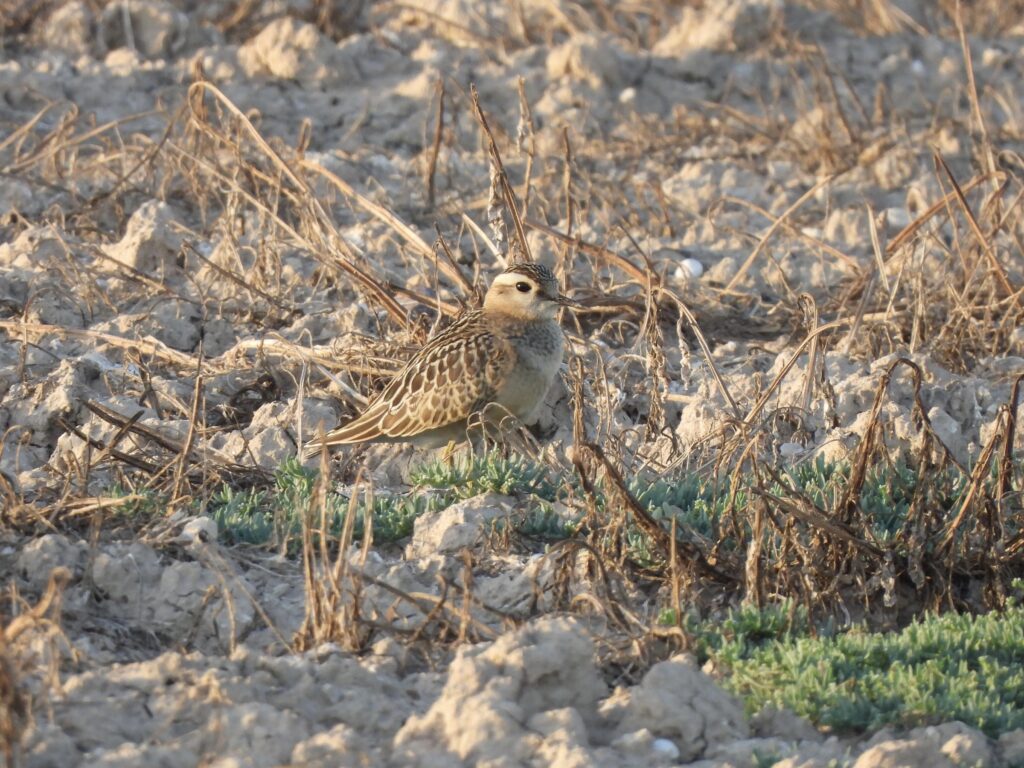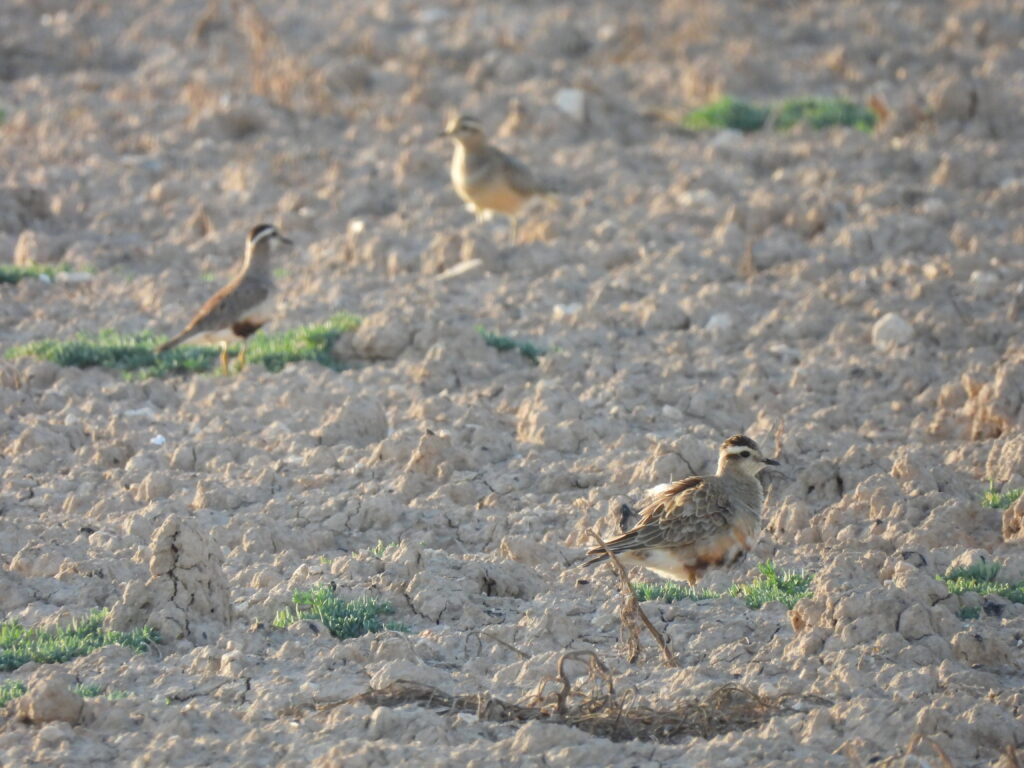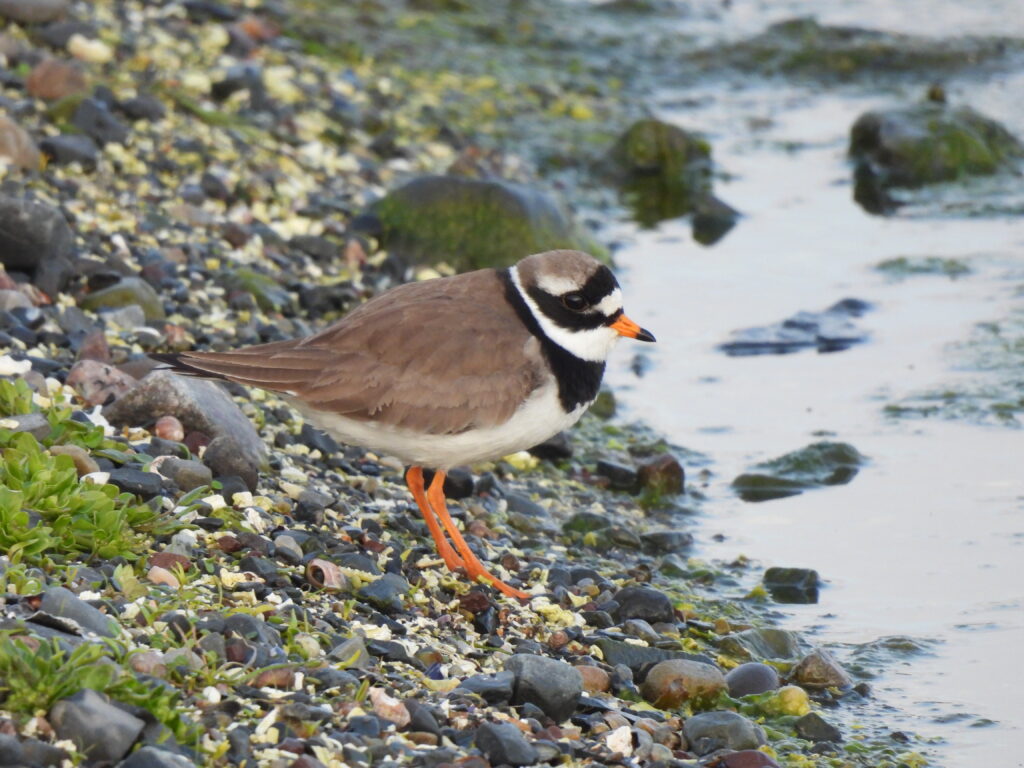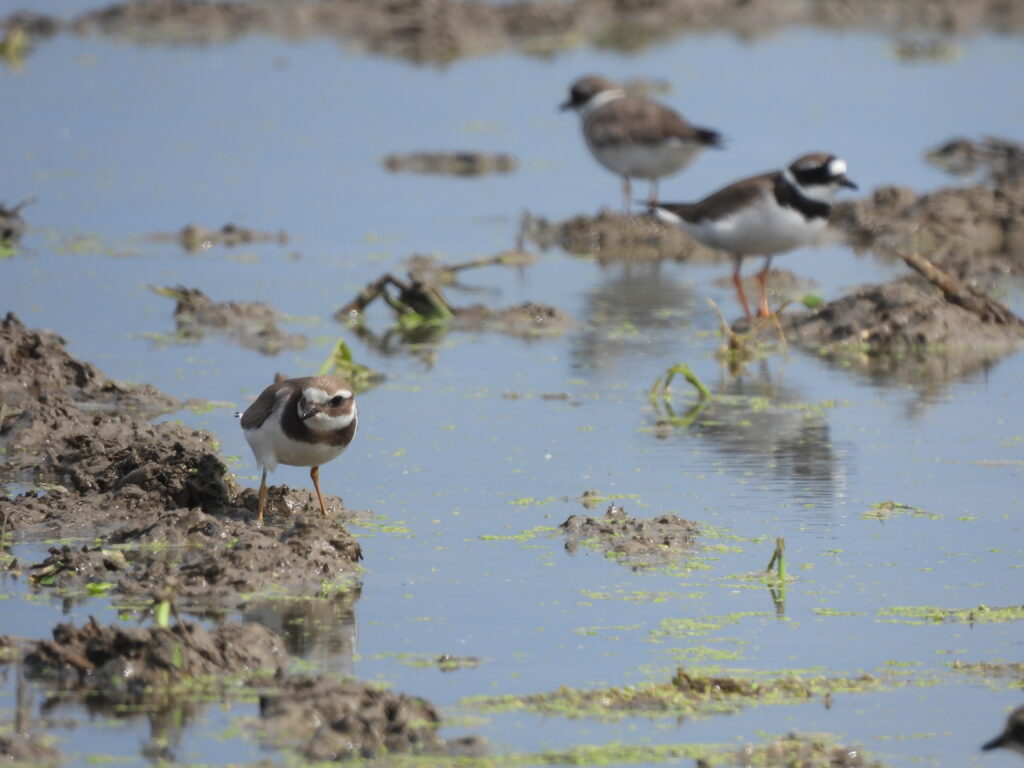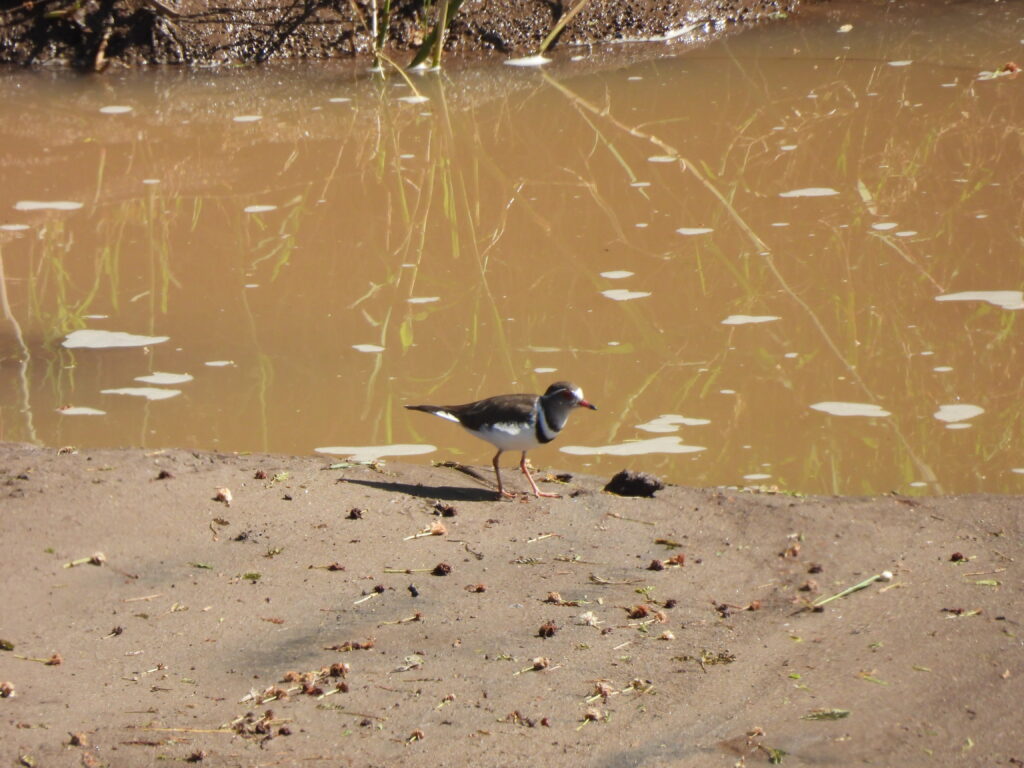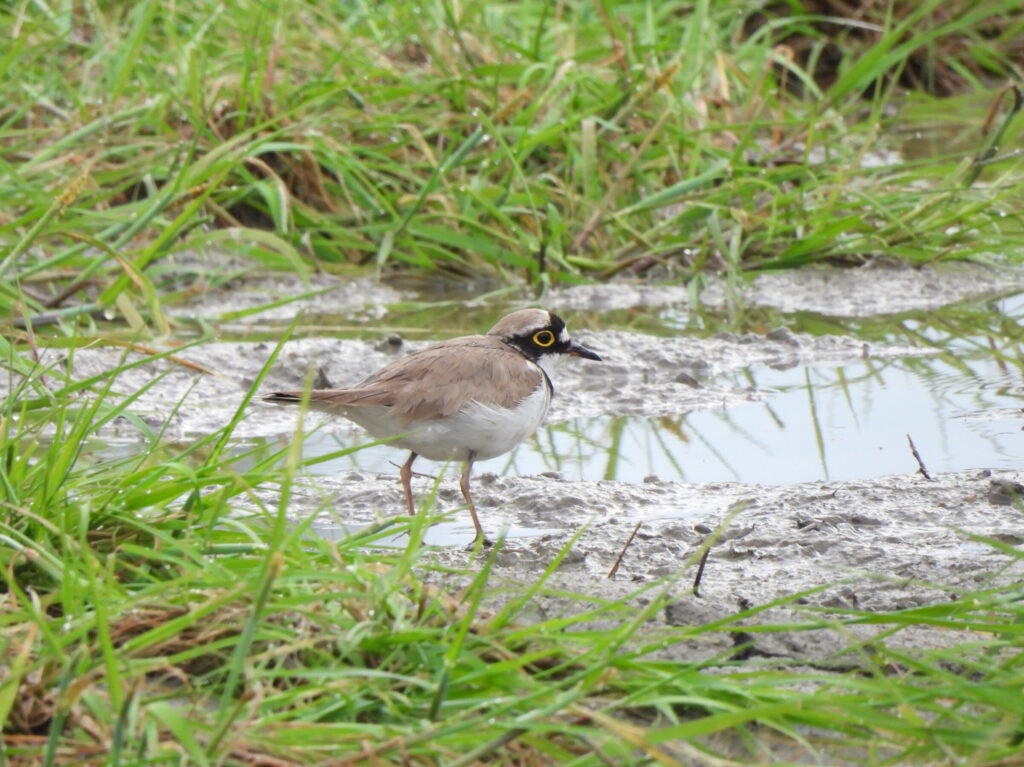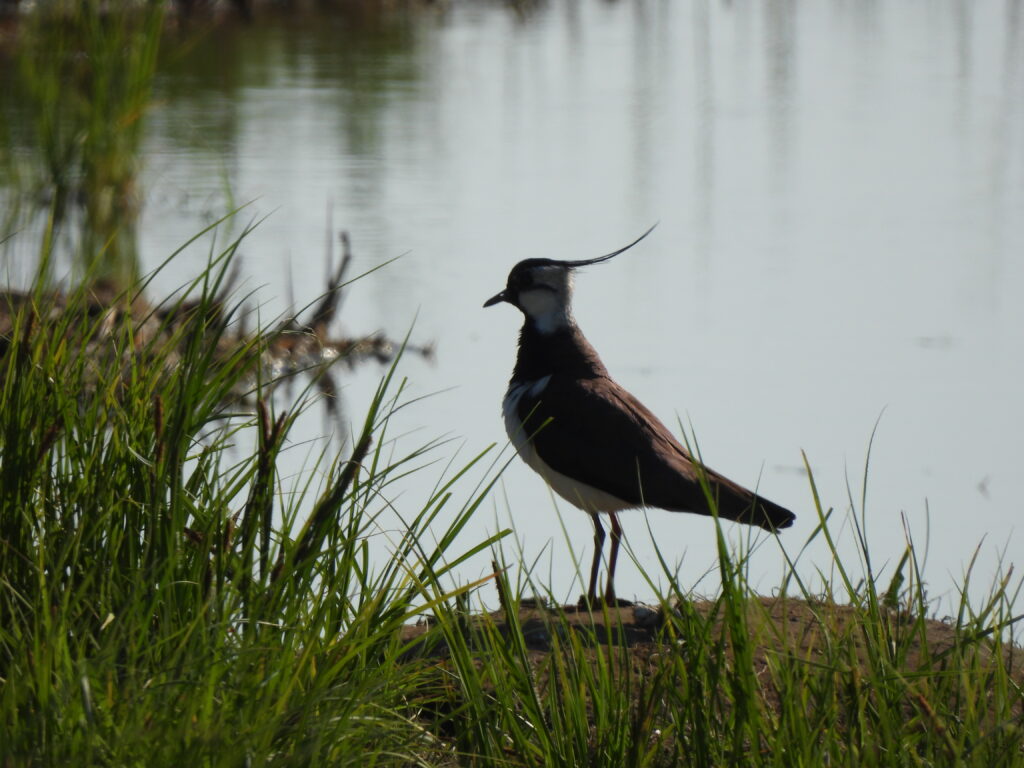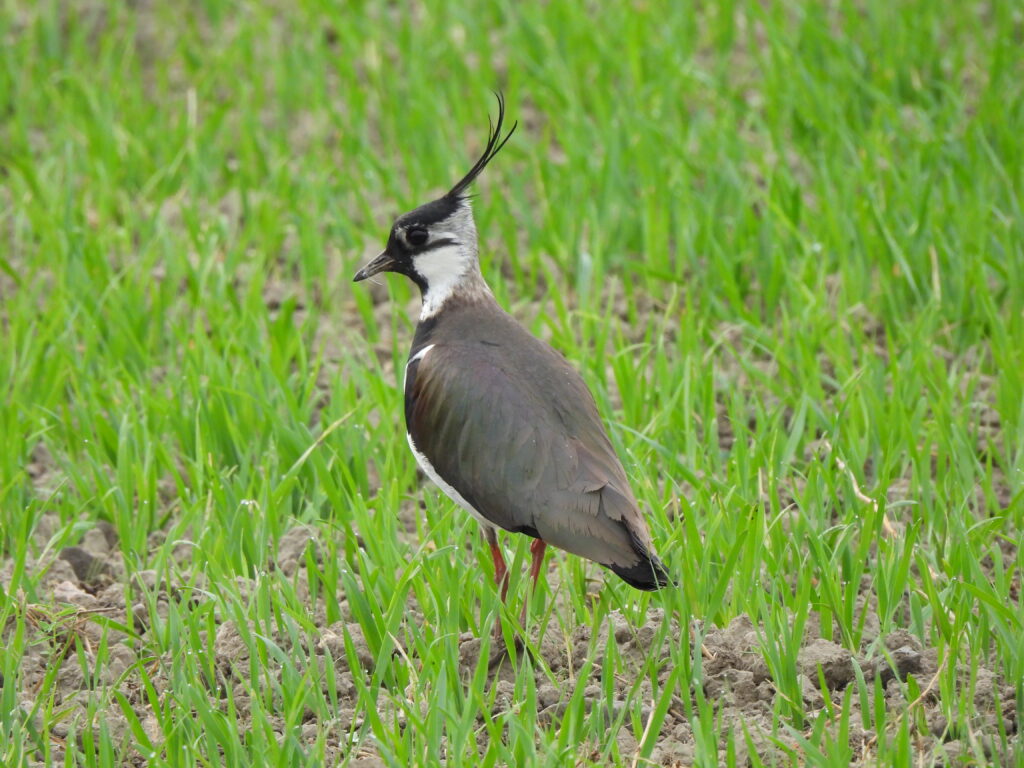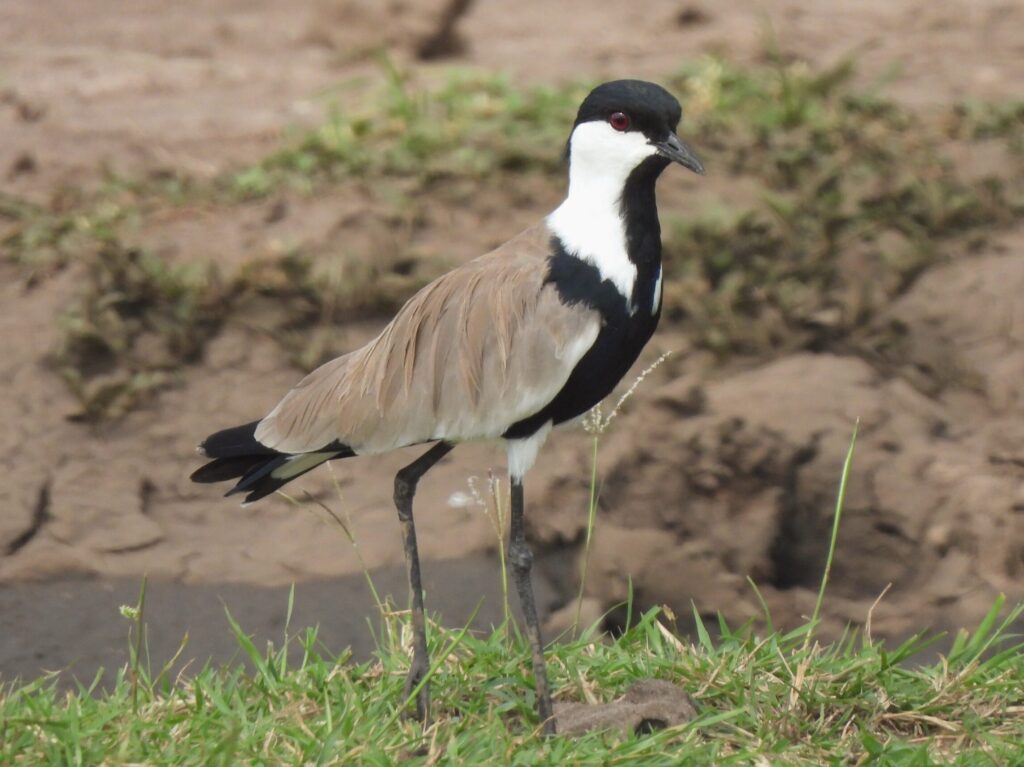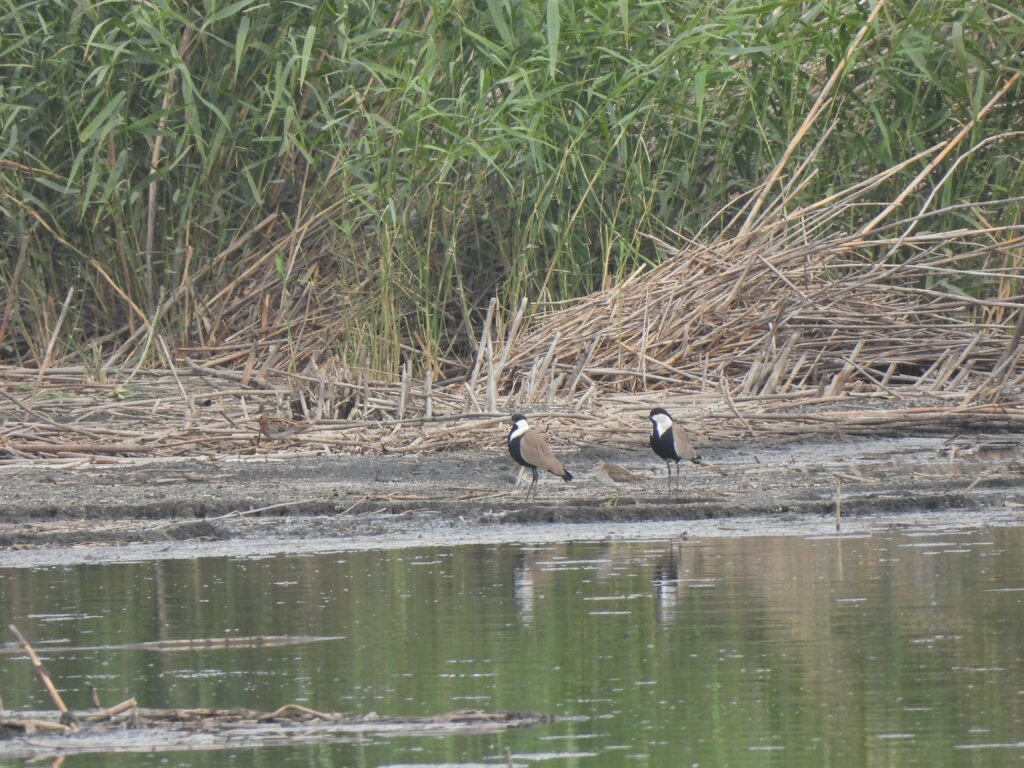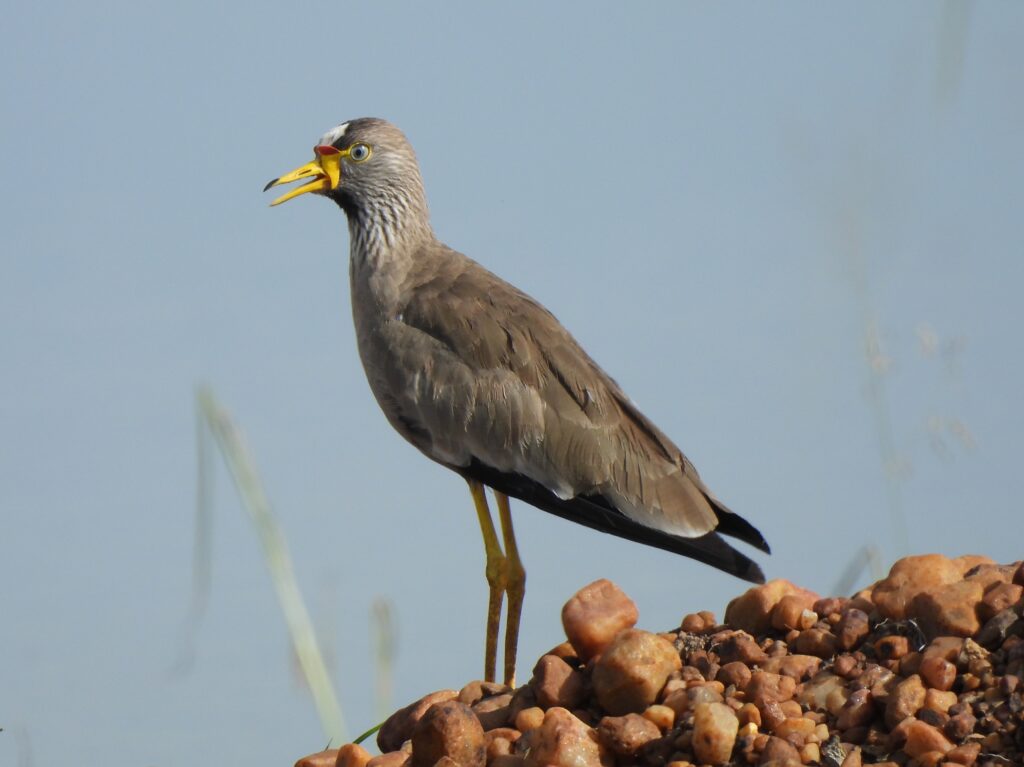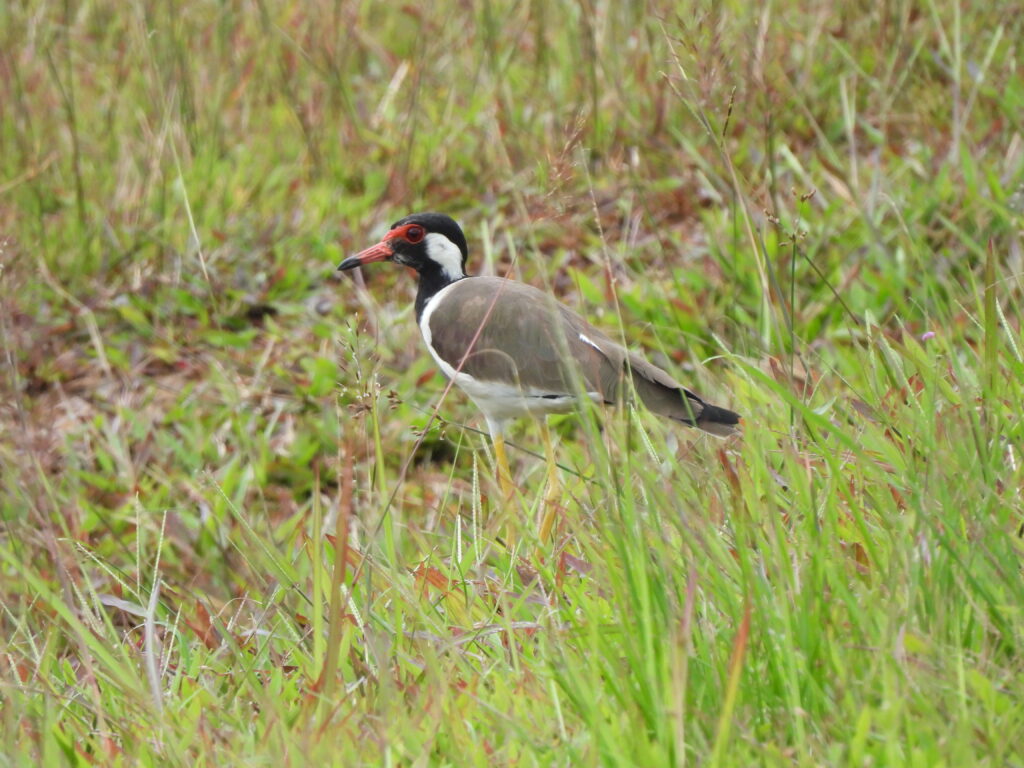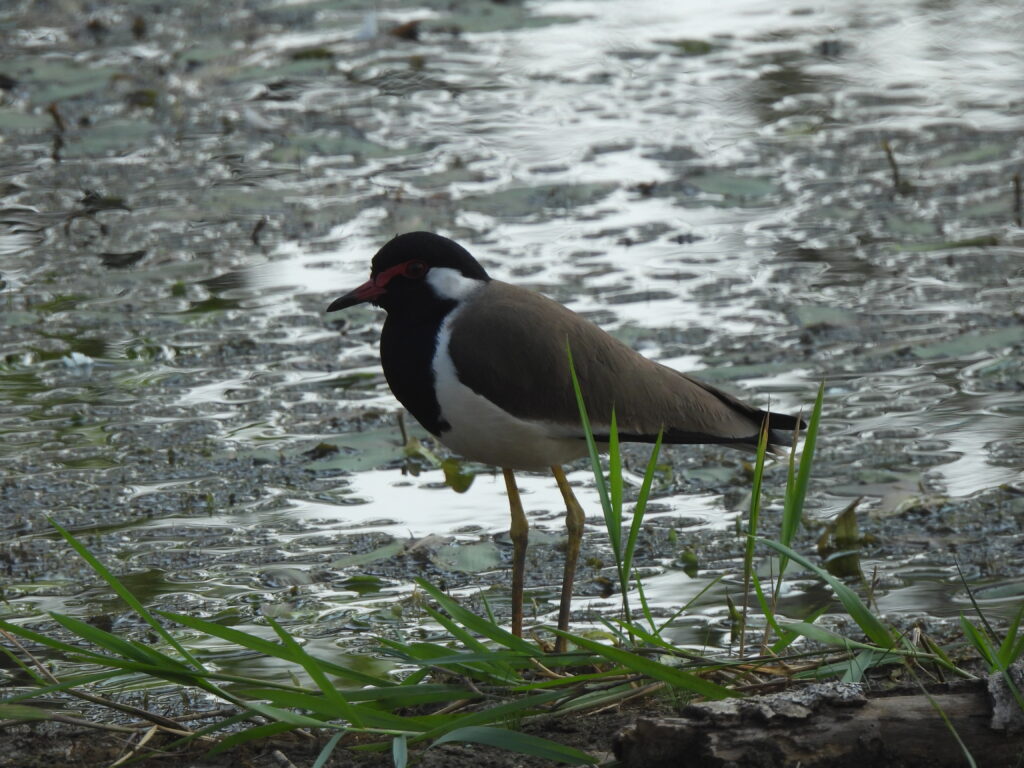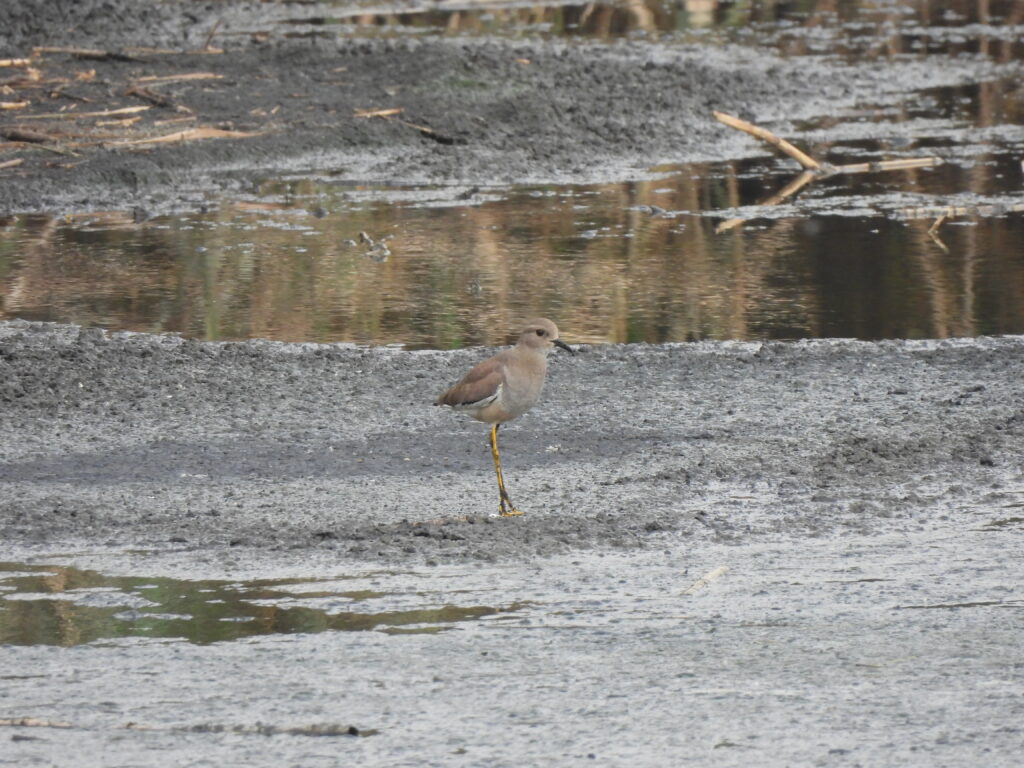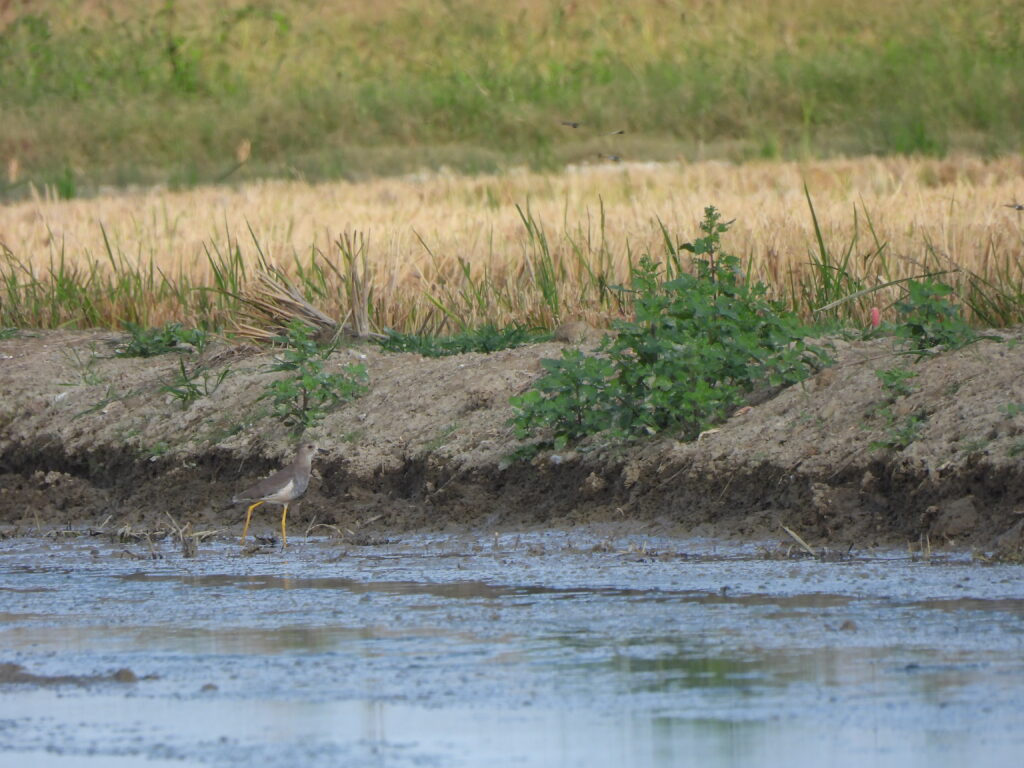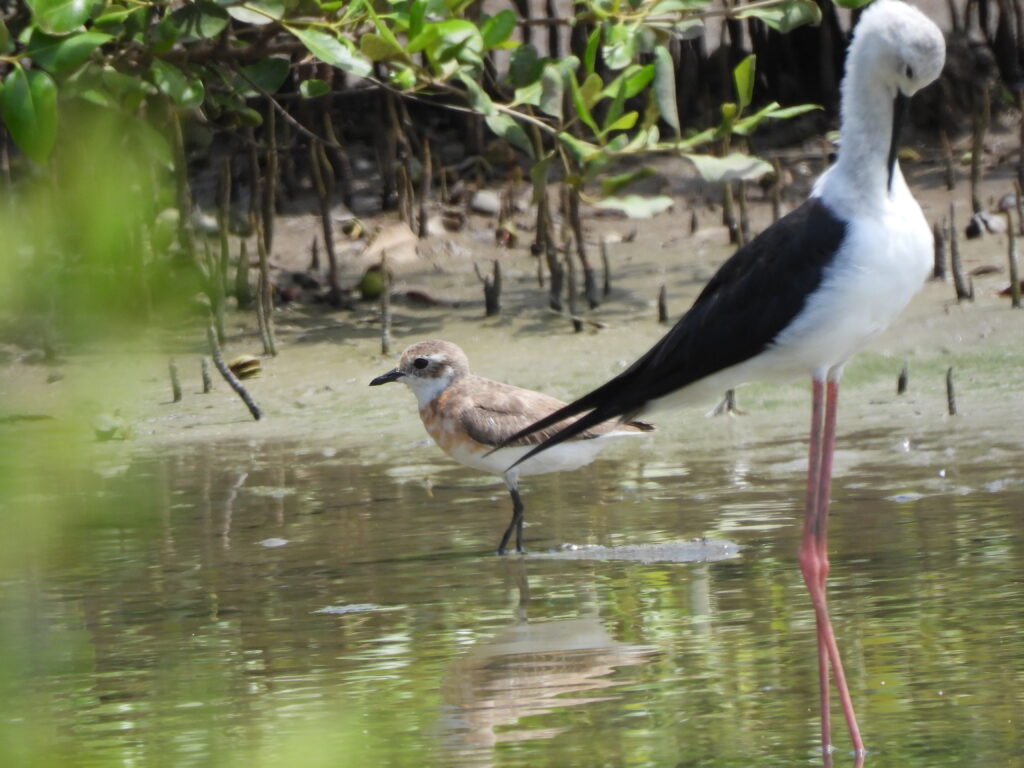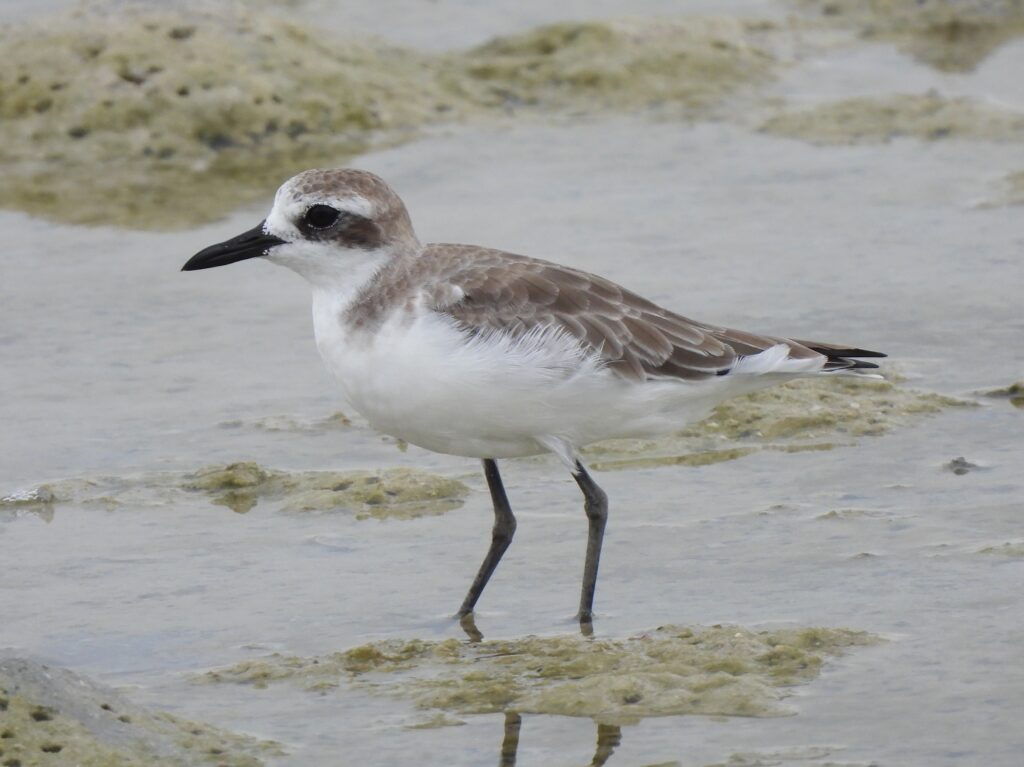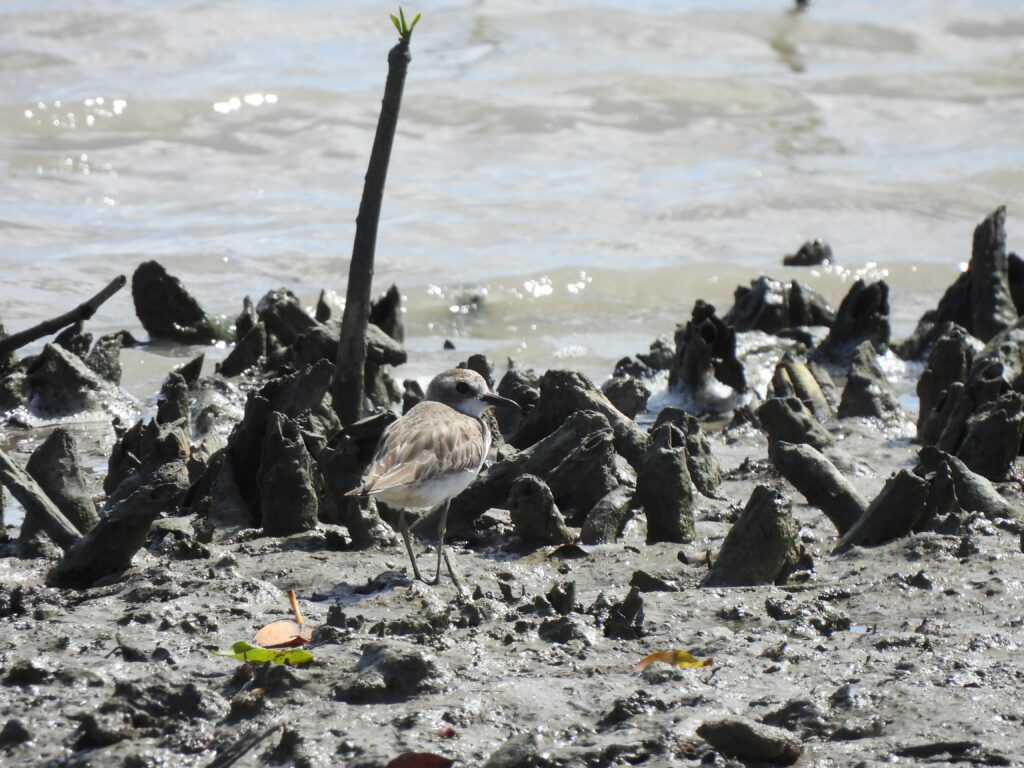The plovers and lapwings (family Charadriidae) are a large family of birds belonging to the order Charadriiformes, often regarded as shorebirds. These small to medium birds often forage river banks, wetland shores and coastlines, although some species are extremely localized and poorly known habitat specialists, in some cases far from water bodies. Many of the family members have characteristic plumage patterns, while some lapwings additionally show wattles or tufts. All family members are rather compact, with relatively short bills and long legs and are generally extremely protective towards their nests.
The family comprises 69 species belonging to 12 genera. Basal genus Pluvialis (4 species) includes large plovers. Other basal, odd members include genera Oreopholus (1 species), Hoploxypterus (1 species), Phegornis (1 species), Zonibyx (1 species) and Eudromias (1 species), some of which are known as dotterels. The typical, smaller plovers are polyphyletic: a first clade includes genera Charadrius (4 species) and Thinornis (7 species), which are most related to the lapwings, genus Vanellus (23 species of which 1 likely extinct), whereas the second clade is related to odd Australian dotterel genera Erythrogonys (1 species) and Peltohyas (1 species) and includes genus Anarhynchus (24 species).
Gray plover
Pluvialis squatarola
Large plover breeding in high Arctic tundra of Siberia, Alaska and Canada which migrates to shores of all continents except Antarctica during non-breeding period. Juveniles usually take two years to breed and spend that time in wintering grounds. This species is classified as vulnerable globally. Juveniles in winter and adults in passage are regularly seen in wetlands and shores of Alicante. I have also observed this species in Mauritius, Greece, Kuwait, Qatar and Kenya.
European golden plover
Pluvialis apricaria
Breeds in tundra and barren highlands of Greenland and Iceland to central Siberia and winters locally in Western Europe and the Mediterranean basin, often in very large flocks. This species often shows up in large numbers during winter in Alicante, at times mixed with other waders. I have seen good numbers in breeding grounds in Lapland.
Pacific golden plover
Pluvialis fulva
Breeds in Arctic tundra of central to eastern Siberia and Alaska and migrates south mostly to Southern Asia to Australasia, with numbers reaching the Horn of Africa, Pacific Islands and California. I have observed flocks mixed with other waders in wintering grounds of Thailand and India. Besides, some individuals reach the Western Palearctic regularly, and I have seen this species in Catalonia, Spain during autumn.
Eurasian dotterel
Eudromias morinellus
Breeds in moorland and tundra of the Arctic and barren highlands of the Palearctic, mostly in Siberia and Scandinavia but also in the Alps and Scottish Highlands. Flocks migrate south via unknown routes to poorly known locations, likely in mountain areas of Northern Africa, but traditional stopovers are visited by flocks every season. This is the case of some croplands in Alicante, where modest numbers of this species visit for a short time span every autumn.
Common ringed plover
Charadrius hiaticula
Small plover breeding in beaches and flats from far Northeast Canada through Greenland and Northern Europe to far Eastern Siberia, and migrates to a variety of wetland habitats mostly throughout the Afrotropical region during the non-breeding period. This species visits wetlands in Alicante in good numbers mostly during passage. They are summer visitors in Helsinki, mostly during their migrations too. I have also seen this species breeding in Lapland and wintering in Qatar and Kenya.
Three-banded plover
Thinornis tricollaris
Found in shores of rivers, lakes, ponds and other inland water bodies across Eastern and Southern Africa, with a distinct form bifrontatus from Madagascar. The namesake black and white bands of the neck and the red bill base and orbital ring are distinctive. I have seen this species in different parts of Kenya.
Little ringed plover
Thinornis dubius
Small plover breeding in gravel areas near water bodies such as river banks much across the Palearctic including Europe, Asia and northwestern Africa. Some populations migrate south to equatorial latitudes during non-breeding period. This species is an abundant visitor in passage and breeds locally in few locations of Alicante. Good numbers reach Helsinki every summer. I have observed good numbers in Kuwait and India.
Northern lapwing
Vanellus vanellus
Numerous but near threatened wader of cold and temperate grasslands across the Palearctic, with large flocks gathering in open land during winter and migrating to areas with milder climate. Distinctive and familiar, with a long black crest and iridescent wing colors. This species visits wetlands in Alicante in good numbers each winter. It is the most abundant wader in wetlands and croplnd of Helsinki area, as well as one of the earliest summer visitors, arriving before snow melts.
Blacksmith lapwing
Vanellus armatus
Resident in wet grasslands and wetland habitats of the southern half of Africa. Distinctive, with a stunning black, gray and white plumage, a call reminiscent of a blacksmith hammering an anvil and a spur on the carpal wrist joint, a feature shared with some other species. I have seen this species in Kenya.
Spur-winged lapwing
Vanellus spinosus
A widespread resident mostly between the equator and the Sahara and along the Nile basin in Africa, with disjunct populations in the Middle East reaching Turkey and Greece, where the species is partially migratory. The striking black, brown and white pattern and the spurs in the carpal joints of the wings are distinctive. This species was hypothesized to be Herodotus’ mythical “trochilus”, the bird cleaning Nile crocodiles. I have observed this species in Kenya.
Crowned lapwing
Vanellus coronatus
Found in short grass dry lands across Subsaharn Africa, where they perform partial migratory movements often avoiding high rainfall supply. Their head features a large black crown with a white band, and their bright red legs and bill base are distinctive. I have seen this species in Kenya, often foraging at night in the spotlight during game drives.
African wattled lapwing
Vanellus senegallus
Large lapwing found along the Afrotropical realm, mostly in damp grasslands but sometimes in drier grasslands including golf courses. A white forehead and bright yellow legs, bill and wattle with a red mark hanging at the bill base are distinctive of this otherwise mostly brown wader. I have seen this species in Kenya.
Red-wattled lapwing
Vanellus indicus
Abundant lapwing of wet grassland, rice paddies and diverse wetland habitats from the Middle East through the Indian Subcontinent to Southeast Asia. Its striking black, white and brown plumage with a distinctive bright red facial bare skin are supplemented by loud calls, familiar in many croplands in Asia. I have observed good numbers in India, Thailand, Qatar and Vietnam.
White-tailed lapwing
Vanellus leucurus
Local breeder in marshes of Central Asia, migrating to different locations in northeastern Africa and the western Indian Subcontinent. Besides the namesake white tail, long bright yellow legs are characteristic of this species. I have seen it in Kuwait. This species is a mega vagrant in Western Europe, where I have observed an individual in Catalonia, Spain.
Tibetan sand plover
Anarhynchus atrifrons
Breeds in the Pamir and Tibetan Plateau in Central Asia and migrates to mudflats and coastal areas across the Indian Ocean, from Southern Africa to Southeast Asia. It ws only recently split from the Siberian sand plover. I have seen this species wintering in coastal mudflats of Kenya and Thailand.
Greater sand plover
Anarhynchus leschenaultii
Relatively large plover breeding in semi-deserts of Central Asia and migrating to shores, tidal flats and other coastal habitats from the Levant and Eastern Africa to Australia. Very similar to related sand plovers, but generally larger and showing a sturdier bill. I have seen numbers of this species in wintering grounds of Mauritius, Qatar and Kenya.
Kentish plover
Anarhynchus alexandrinus
Small plover widespread in warm areas of the Old World, breeding in beach dunes, alkali lake shores and salt marshes from the Iberian Peninsula and Senegambia to Japan, with part of the population migrating to equatorial areas during non-breeding period. Unlike most members of the family, this species shows sexual dimorphism in breeding plumage. It is a resident and localized, threatened breeding bird in coastal Alicante. I have also seen the species in the south India paddyfields.

